Dairy Allergy vs Intolerance: Understanding Lactose Intolerance and Milk Allergy
What are the key differences between lactose intolerance and milk allergy. How do symptoms, causes, and treatments differ for these dairy-related conditions. Why is it important to distinguish between dairy allergy and intolerance.
Understanding Dairy Sensitivity: Lactose Intolerance vs. Milk Allergy
Dairy products can cause digestive issues for many people, but the underlying reasons may differ significantly. Two common conditions related to dairy consumption are lactose intolerance and milk allergy. While these terms are often used interchangeably, they represent distinct health issues with different causes, symptoms, and treatment approaches.
Is lactose intolerance the same as a milk allergy? No, these are two separate conditions. Lactose intolerance is a digestive problem caused by the inability to break down lactose, the sugar found in milk. In contrast, a milk allergy is an immune system response to milk proteins.

Key Differences Between Lactose Intolerance and Milk Allergy
- Cause: Enzyme deficiency vs. immune system reaction
- Onset: Can develop at any age vs. typically appears in early childhood
- Severity: Generally mild to moderate vs. potentially severe or life-threatening
- Prevalence: More common, especially in certain ethnic groups vs. less common, affecting mostly young children
The Science Behind Lactose Intolerance
Lactose intolerance occurs when the body doesn’t produce enough of the enzyme lactase, which is necessary to break down lactose in dairy products. This condition can be genetic or develop over time due to various factors.
How common is lactose intolerance? It’s estimated that 30 to 50 million Americans have lactose intolerance. The prevalence varies significantly among different ethnic groups:
- 80-90% of African-Americans
- High prevalence in Asians and Native Americans
- Increasing incidence with age, common in the elderly
Symptoms of Lactose Intolerance
Symptoms typically appear 30 minutes to 2 hours after consuming dairy products and may include:
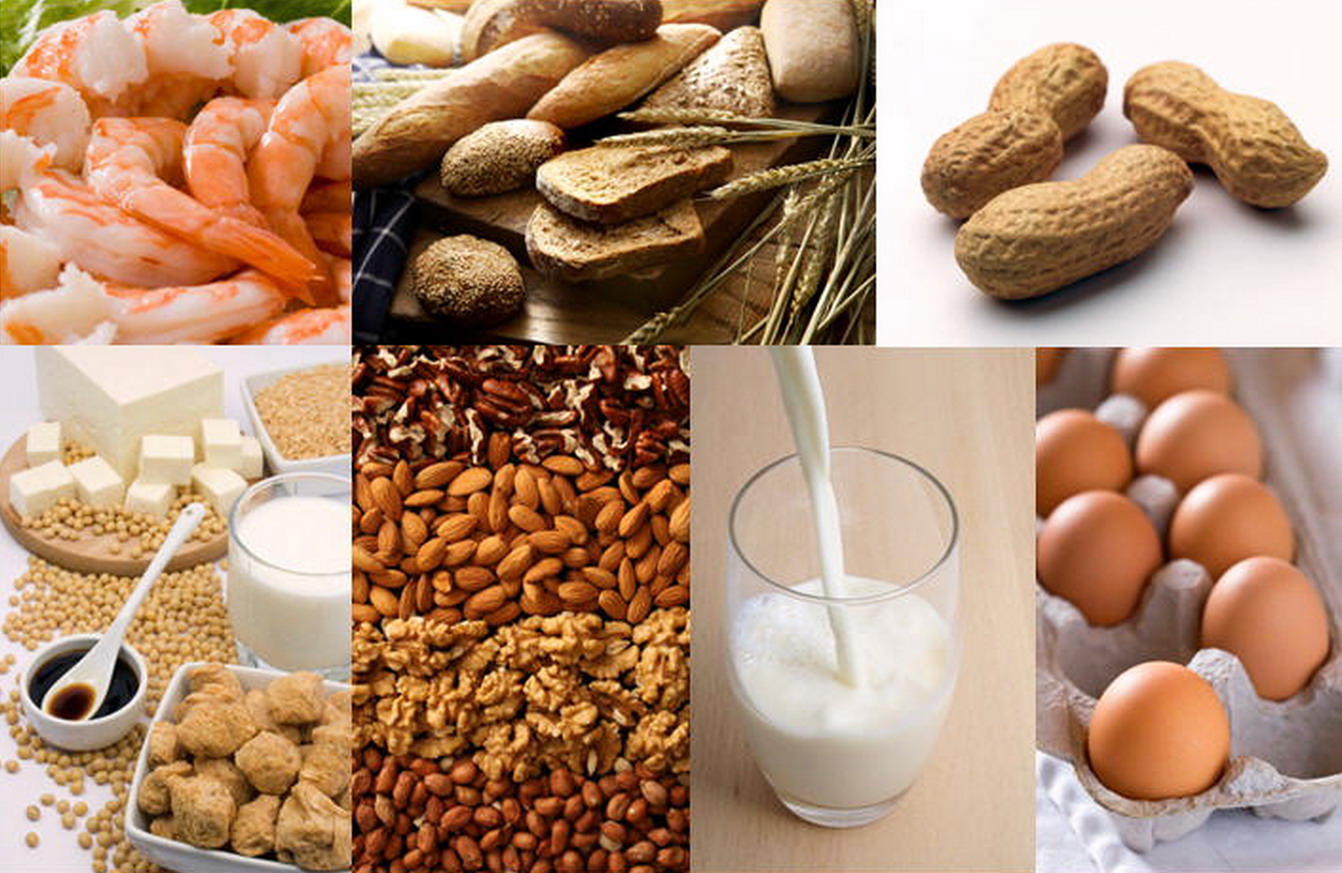
- Stomach pain
- Gas and bloating
- Nausea
- Diarrhea
Milk Allergy: An Immune System Response
Unlike lactose intolerance, a milk allergy is an immune system reaction to one or more proteins found in milk. This condition is most common in infants and young children but can develop at any age.
How prevalent is milk allergy in children? It affects more than 2% of children under the age of 3, making it the most common food allergy in this age group. Many children outgrow milk allergies by age 5, but some may carry the allergy into adulthood.
Symptoms of Milk Allergy
Milk allergy symptoms can appear within minutes or be delayed for several hours after consuming dairy. They may include:
- Stomach pain and nausea
- Diarrhea
- Skin rash
- Swelling of the lips or throat
- Trouble breathing
Can milk allergy cause anaphylaxis? Yes, in severe cases, milk allergy can lead to anaphylaxis, a potentially life-threatening allergic reaction that requires immediate medical attention.
Diagnosing Dairy-Related Conditions
Distinguishing between lactose intolerance and milk allergy can be challenging due to some overlapping symptoms. Healthcare providers may use various methods to make an accurate diagnosis.

Diagnostic Tests for Lactose Intolerance
- Hydrogen breath test: Measures hydrogen levels in breath after consuming lactose
- Stool acidity test: Checks for increased acidity in stool due to undigested lactose
- Elimination diet: Involves removing dairy from the diet and reintroducing it to observe symptoms
Diagnostic Tests for Milk Allergy
- Skin prick test: Checks for immediate allergic reactions
- Blood tests: Measures specific antibodies related to milk proteins
- Oral food challenge: Conducted under medical supervision to confirm diagnosis
Managing Lactose Intolerance: Dietary Strategies and Alternatives
While lactose intolerance requires limiting dairy intake, complete avoidance may not be necessary for everyone. Some strategies to manage this condition include:
- Consuming small amounts of dairy with other foods
- Choosing lactose-reduced or lactose-free dairy products
- Using lactase enzyme supplements before consuming dairy
- Opting for naturally low-lactose dairy foods like hard cheeses and yogurt
Are there non-dairy sources of calcium for those with lactose intolerance? Yes, several non-dairy foods are rich in calcium:

- Leafy green vegetables (spinach, kale, collard greens)
- Fortified plant-based milk alternatives
- Canned fish with soft bones (sardines, salmon)
- Calcium-fortified juices and cereals
- Nuts and seeds (almonds, sesame seeds)
Living with Milk Allergy: Strict Avoidance and Nutritional Considerations
Managing a milk allergy requires complete avoidance of milk and milk-derived ingredients. This can be challenging as milk proteins are found in many processed foods.
Tips for Avoiding Milk in Your Diet
- Read food labels carefully, looking for milk-derived ingredients
- Be cautious of cross-contamination in food preparation
- Communicate your allergy when dining out or at social events
- Explore milk alternatives and dairy-free products
What are some hidden sources of milk proteins to watch out for? Milk proteins can be found in unexpected places, including:
- Deli meats and hot dogs
- Canned tuna
- Baked goods and pastries
- Salad dressings and sauces
- Some medications and supplements
Nutritional Considerations for Dairy-Free Diets
Whether avoiding dairy due to intolerance or allergy, it’s crucial to ensure adequate intake of nutrients typically found in dairy products, particularly calcium and vitamin D.

Non-Dairy Sources of Essential Nutrients
- Calcium: Fortified plant-based milks, leafy greens, tofu, sardines
- Vitamin D: Fatty fish, egg yolks, fortified foods, sunlight exposure
- Protein: Legumes, nuts, seeds, lean meats, fish
- Vitamin B12: Fortified plant-based milks, nutritional yeast, supplements
Is it possible to meet nutritional needs on a dairy-free diet? Yes, with careful planning and a varied diet, individuals can meet their nutritional needs without consuming dairy products. However, consultation with a registered dietitian may be beneficial to ensure optimal nutrition.
Emerging Research and Future Directions
The field of dairy-related health issues continues to evolve, with ongoing research exploring new diagnostic methods, treatment options, and potential prevention strategies.
Recent Developments in Dairy Sensitivity Research
- Microbiome studies investigating the role of gut bacteria in lactose tolerance
- Gene therapy approaches for treating lactase deficiency
- Immunotherapy trials for milk allergy desensitization
- Development of hypoallergenic milk products through protein modification
Could future treatments eliminate the need for dietary restrictions? While current management primarily involves dietary modifications, ongoing research holds promise for more targeted treatments that may reduce or eliminate the need for strict avoidance in some individuals.

As our understanding of dairy-related conditions continues to grow, it’s essential for individuals experiencing symptoms to seek proper diagnosis and guidance from healthcare professionals. Whether dealing with lactose intolerance or milk allergy, a tailored approach to diet and nutrition can help manage symptoms effectively while ensuring overall health and well-being.
Difference between Lactose Intolerance & Milk Allergy
There’s a lot of confusion surrounding lactose intolerance and milk allergy — the terms may sound similar, but they actually describe two different digestive problems, and one is more severe than the other.
Lactose intolerance is caused by not having enough of the enzyme lactase, which is needed to break down lactose, the sugar found in milk and other dairy products. Milk allergy is a true food allergy caused by an allergic reaction to the protein in milk.
“Lactose intolerance and milk allergy are very different entities,” explains Amy E. Barto, MD, a gastroenterologist at the Lahey Clinic in Burlington, Mass. “Milk allergy usually shows up early in life. Lactose intolerance is more common, takes longer to develop, and can occur at any time of life.”
Symptoms of Lactose Intolerance vs. Milk Allergy
Lactose intolerance can be genetic, or it can be caused by damage to the small intestine due to a viral or bacterial infection, Dr. Barto explains. It’s also fairly common, and more so in certain populations. “About 80 to 90 percent of African-Americans have lactose intolerance, and it is also very common in Asians and Native Americans,” says Barto. “It is also important to remember that lactose intolerance increases with age and is quite common in the elderly.” It’s estimated that 30 to 50 million Americans have lactose intolerance.
Barto explains. It’s also fairly common, and more so in certain populations. “About 80 to 90 percent of African-Americans have lactose intolerance, and it is also very common in Asians and Native Americans,” says Barto. “It is also important to remember that lactose intolerance increases with age and is quite common in the elderly.” It’s estimated that 30 to 50 million Americans have lactose intolerance.
You’ll typically feel lactose intolerance symptoms between 30 minutes and two hours after ingesting milk or a dairy food. Symptoms may include:
- Stomach pain
- Gas and bloating
- Nausea
- Diarrhea
Milk allergy usually refers only to cow’s milk, although you may also be allergic to other types of milk, including soy. Although milk allergy is most common in infants and children, it can develop at any age. Milk allergy is the most common food allergy in children, affecting more than 2 percent of children who are under the age of 3. Many children outgrow milk allergies by age 5.
The food allergy reaction to milk can begin within minutes or can be delayed for several hours. Symptoms may include:
- Stomach pain
- Nausea
- Diarrhea
- Skin rash
- Swelling of the lips or throat
- Trouble breathing
Diagnosing Lactose Intolerance and Milk Allergy
Lactose intolerance can typically be distinguished from milk allergy by less severe symptoms and a person’s history of problems with dairy, but sometimes doctors aren’t able to differentiate the two right away. “Your doctor may ask you to keep a food diary, avoid dairy for a while, and then reintroduce it,” says Barto. “If in doubt, there are lab tests that can help make the diagnosis.”
Tests include:
- Hydrogen breath test. Undigested lactose produces high levels of hydrogen gas in your breath. Doctors can diagnose lactose intolerance by measuring this hydrogen after you drink a lactose-loaded beverage.
- Stool acidity test.
 Undigested lactose also increases the amount of acid in the stool. Doctors may use this test to diagnose lactose intolerance in young children.
Undigested lactose also increases the amount of acid in the stool. Doctors may use this test to diagnose lactose intolerance in young children. - Food allergy testing. If your doctor suspects a milk allergy, you may be sent to an allergist for skin testing or have a blood sample drawn for laboratory allergy testing.
Can You Eat Dairy With Lactose Intolerance or Milk Allergy?
For both of these conditions, you’ll need to avoid or limit most dairy products. “But it is important to make sure you are getting enough calcium,” says Barto.
If you have lactose intolerance, you may be able to tolerate small amounts of dairy. You can try hard cheeses and yogurt products, which tend to be lower in lactose than milk. There are also a variety of dairy-free foods that are high in calcium, including spinach, almonds, and dark leafy green vegetables.
If you have milk allergy, you need to read labels and avoid foods that have any dairy, including the ingredients casein, whey, lactulose, lactalbumin, and ghee.
If you or your child has symptoms that may be due to milk allergy or lactose intolerance, talk with your doctor. He or she can diagnose the problem and advise you on how best to avoid dairy while maintaining good nutrition, which is important no matter how young or old you are.
Milk allergy – Symptoms and causes
Overview
Milk allergy is an abnormal response by the body’s immune system to milk and products containing milk. It’s one of the most common food allergies in children. Cow’s milk is the usual cause of milk allergy, but milk from sheep, goats, buffalo and other mammals also can cause a reaction.
An allergic reaction usually occurs soon after you or your child consumes milk. Signs and symptoms of milk allergy range from mild to severe and can include wheezing, vomiting, hives and digestive problems. Milk allergy can also cause anaphylaxis — a severe, life-threatening reaction.
Avoiding milk and milk products is the primary treatment for milk allergy. Fortunately, most children outgrow milk allergy. Those who don’t outgrow it may need to continue to avoid milk products.
Fortunately, most children outgrow milk allergy. Those who don’t outgrow it may need to continue to avoid milk products.
Products & Services
Show more products from Mayo Clinic
Symptoms
Milk allergy symptoms, which differ from person to person, occur a few minutes to a few hours after you or your child drinks milk or eats milk products.
Immediate signs and symptoms of milk allergy might include:
- Hives
- Wheezing
- Itching or tingling feeling around the lips or mouth
- Swelling of the lips, tongue or throat
- Coughing or shortness of breath
- Vomiting
Signs and symptoms that may take more time to develop include:
- Loose stools or diarrhea, which may contain blood
- Abdominal cramps
- Runny nose
- Watery eyes
- Colic, in babies
Milk allergy or milk intolerance?
A true milk allergy differs from milk protein intolerance and lactose intolerance. Unlike milk allergy, intolerance doesn’t involve the immune system. Milk intolerance requires different treatment from true milk allergy.
Unlike milk allergy, intolerance doesn’t involve the immune system. Milk intolerance requires different treatment from true milk allergy.
Common signs and symptoms of milk protein intolerance or lactose intolerance include digestive problems, such as bloating, gas or diarrhea, after consuming milk or products containing milk.
Anaphylaxis
Milk allergy can cause anaphylaxis, a life-threatening reaction that narrows the airways and can block breathing. Milk is the third most common food — after peanuts and tree nuts — to cause anaphylaxis.
If you or your child has a reaction to milk, tell your doctor, no matter how mild the reaction. Tests can help confirm milk allergy, so you can avoid future and potentially worse reactions.
Anaphylaxis is a medical emergency and requires treatment with an epinephrine (adrenaline) shot (EpiPen, Adrenaclick, others) and a trip to the emergency room. Signs and symptoms start soon after milk consumption and can include:
- Constriction of airways, including a swollen throat that makes it difficult to breathe
- Facial flushing
- Itching
- Shock, with a marked drop in blood pressure
When to see doctor
See your doctor or an allergist if you or your child experiences milk allergy symptoms shortly after consuming milk. If possible, see your doctor during the allergic reaction to help the doctor make a diagnosis. Seek emergency treatment if you or your child develops signs or symptoms of anaphylaxis.
If possible, see your doctor during the allergic reaction to help the doctor make a diagnosis. Seek emergency treatment if you or your child develops signs or symptoms of anaphylaxis.
Causes
All true food allergies are caused by an immune system malfunction. If you have milk allergy, your immune system identifies certain milk proteins as harmful, triggering the production of immunoglobulin E (IgE) antibodies to neutralize the protein (allergen). The next time you come in contact with these proteins, IgE antibodies recognize them and signal your immune system to release histamine and other chemicals, causing a range of allergic signs and symptoms.
There are two main proteins in cow’s milk that can cause an allergic reaction:
- Casein, found in the solid part (curd) of milk that curdles
- Whey, found in the liquid part of milk that remains after milk curdles
You or your child may be allergic to only one milk protein or to both. These proteins may be hard to avoid because they’re also in some processed foods. And most people who react to cow’s milk will react to sheep’s, goat’s and buffalo’s milk. Less commonly, people allergic to cow’s milk are also allergic to soy milk.
These proteins may be hard to avoid because they’re also in some processed foods. And most people who react to cow’s milk will react to sheep’s, goat’s and buffalo’s milk. Less commonly, people allergic to cow’s milk are also allergic to soy milk.
Food protein-induced enterocolitis syndrome (FPIES)
A food allergen can also cause what’s sometimes called a delayed food allergy. Although any food can be a trigger, milk is one of the most common. The reaction, commonly vomiting and diarrhea, usually occurs within hours after eating the trigger rather than within minutes.
Unlike some food allergies, FPIES usually resolves over time. As with milk allergy, preventing an FPIES reaction involves avoiding milk and milk products.
Risk factors
Certain factors may increase the risk of developing milk allergy:
- Other allergies.
 Many children allergic to milk also have other allergies. Milk allergy may develop before other allergies.
Many children allergic to milk also have other allergies. Milk allergy may develop before other allergies. - Atopic dermatitis. Children who have atopic dermatitis — a common, chronic inflammation of the skin — are much more likely to develop a food allergy.
- Family history. A person’s risk of a food allergy increases if one or both parents have a food allergy or another type of allergy or allergic disease — such as hay fever, asthma, hives or eczema.
- Age. Milk allergy is more common in children. As they age, their digestive systems mature, and their bodies are less likely to react to milk.
Complications
Children who are allergic to milk are more likely to develop certain other health problems, including:
- Allergies to other foods — such as eggs, soy, peanuts or even beef
- Hay fever — a common reaction to pet dander, dust mites, grass pollen and other substances
Prevention
There’s no sure way to prevent a food allergy, but you can prevent reactions by avoiding the food that causes them.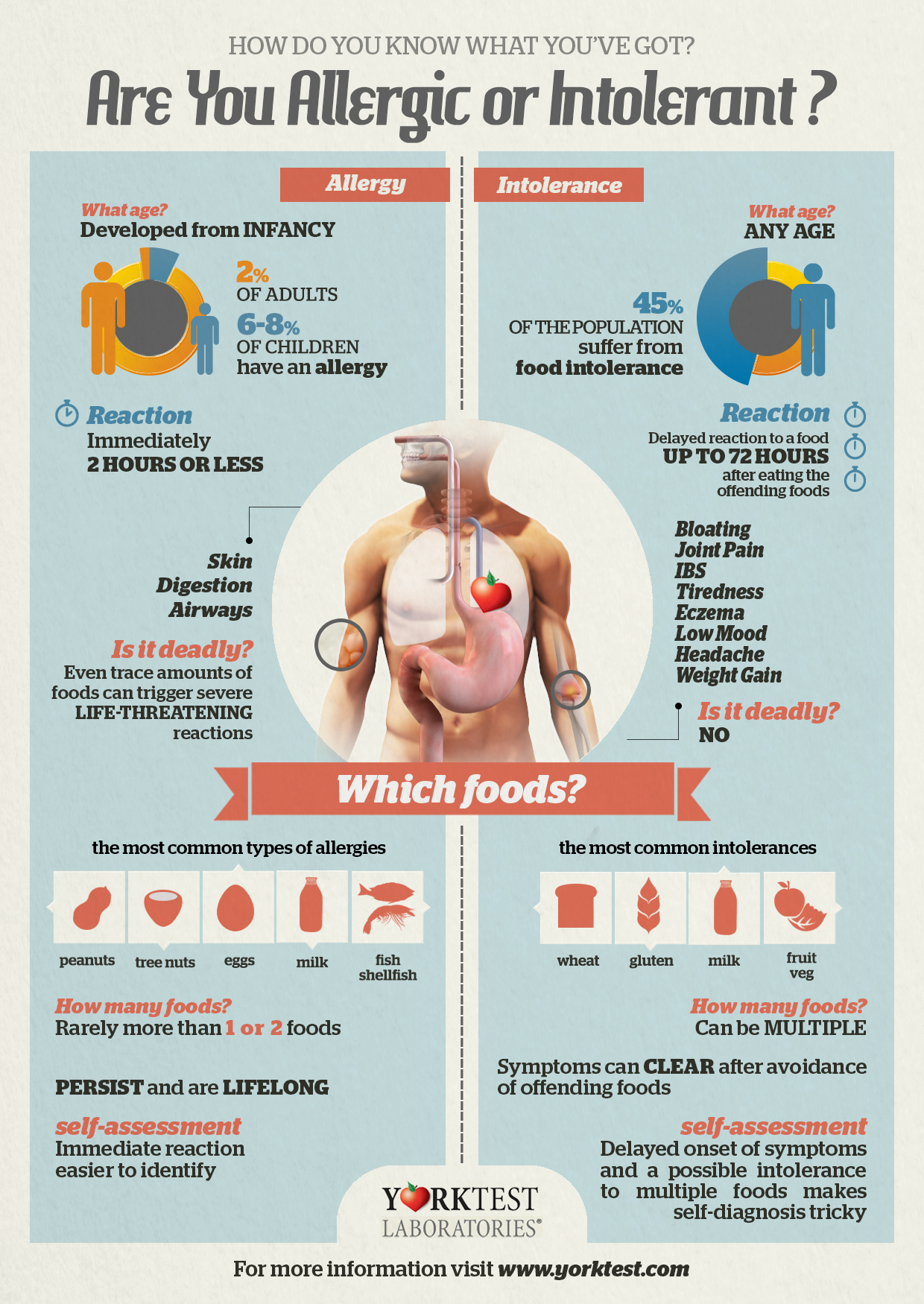 If you know you or your child is allergic to milk, avoid milk and milk products.
If you know you or your child is allergic to milk, avoid milk and milk products.
Read food labels carefully. Look for casein, a milk derivative, which can be found in some unexpected places, such as in some canned tuna, sausage or nondairy products. Question ingredients when ordering in restaurants.
Sources of milk
Obvious sources of allergy-causing milk proteins are found in dairy products, including:
- Whole milk, low-fat milk, skim milk, buttermilk
- Butter
- Yogurt
- Ice cream, gelato
- Cheese and anything that contains cheese
- Half-and-half
Milk can be harder to identify when it’s used as an ingredient in processed foods, including baked goods and processed meats. Hidden sources of milk include:
- Whey
- Casein
- Ingredients spelled with the prefix “lact” — such as lactose and lactate
- Candies, such as chocolate, nougat and caramel
- Protein powders
- Artificial butter flavor
- Artificial cheese flavor
- Hydrolysates
Even if a food is labeled “milk-free” or “nondairy,” it may contain allergy-causing milk proteins — so you have to read the label carefully. When in doubt, contact the manufacturer to be sure a product doesn’t contain milk ingredients.
When in doubt, contact the manufacturer to be sure a product doesn’t contain milk ingredients.
When eating out, ask how foods have been prepared. Does your steak have melted butter on it? Was your seafood dipped in milk before cooking?
If you’re at risk of a serious allergic reaction, talk with your doctor about carrying and using emergency epinephrine (adrenaline). If you have already had a severe reaction, wear a medical alert bracelet or necklace that lets others know you have a food allergy.
Milk alternatives for infants
In children who are allergic to milk, breast-feeding and the use of hypoallergenic formula can prevent allergic reactions.
- Breast-feeding is the best source of nutrition for your infant. Breast-feeding for as long as possible is recommended, especially if your infant is at high risk of developing milk allergy.
Hypoallergenic formulas are produced by using enzymes to break down (hydrolyze) milk proteins, such as casein or whey.
 Further processing can include heat and filtering. Depending on their level of processing, products are classified as either partially or extensively hydrolyzed. Or they may also be called elemental formulas.
Further processing can include heat and filtering. Depending on their level of processing, products are classified as either partially or extensively hydrolyzed. Or they may also be called elemental formulas.Some hypoallergenic formulas aren’t milk based, but instead contain amino acids. Besides extensively hydrolyzed products, amino-acid-based formulas are the least likely to cause an allergic reaction.
- Soy-based formulas are based on soy protein instead of milk. Soy formulas are fortified to be nutritionally complete — but, unfortunately, some children with a milk allergy also develop an allergy to soy.
If you’re breast-feeding and your child is allergic to milk, cow’s milk proteins passed through your breast milk may cause an allergic reaction. You may need to exclude from your diet all products that contain milk. Talk to your doctor if you know — or suspect — that your child has milk allergy and develops allergy signs and symptoms after breast-feeding.
If you or your child is on a milk-free diet, your doctor or dietitian can help you plan nutritionally balanced meals. You or your child may need to take supplements to replace calcium and nutrients found in milk, such as vitamin D and riboflavin.
Food allergy vs. food intolerance: What’s the difference?
Physical reactions to certain foods are common, but most are caused by a food intolerance rather than a food allergy. A food intolerance can cause some of the same signs and symptoms as a food allergy, so people often confuse the two.
A true food allergy causes an immune system reaction that affects numerous organs in the body. It can cause a range of symptoms. In some cases, an allergic food reaction can be severe or life-threatening. In contrast, food intolerance symptoms are generally less serious and often limited to digestive problems.
If you have a food intolerance, you may be able to eat small amounts of the offending food without trouble.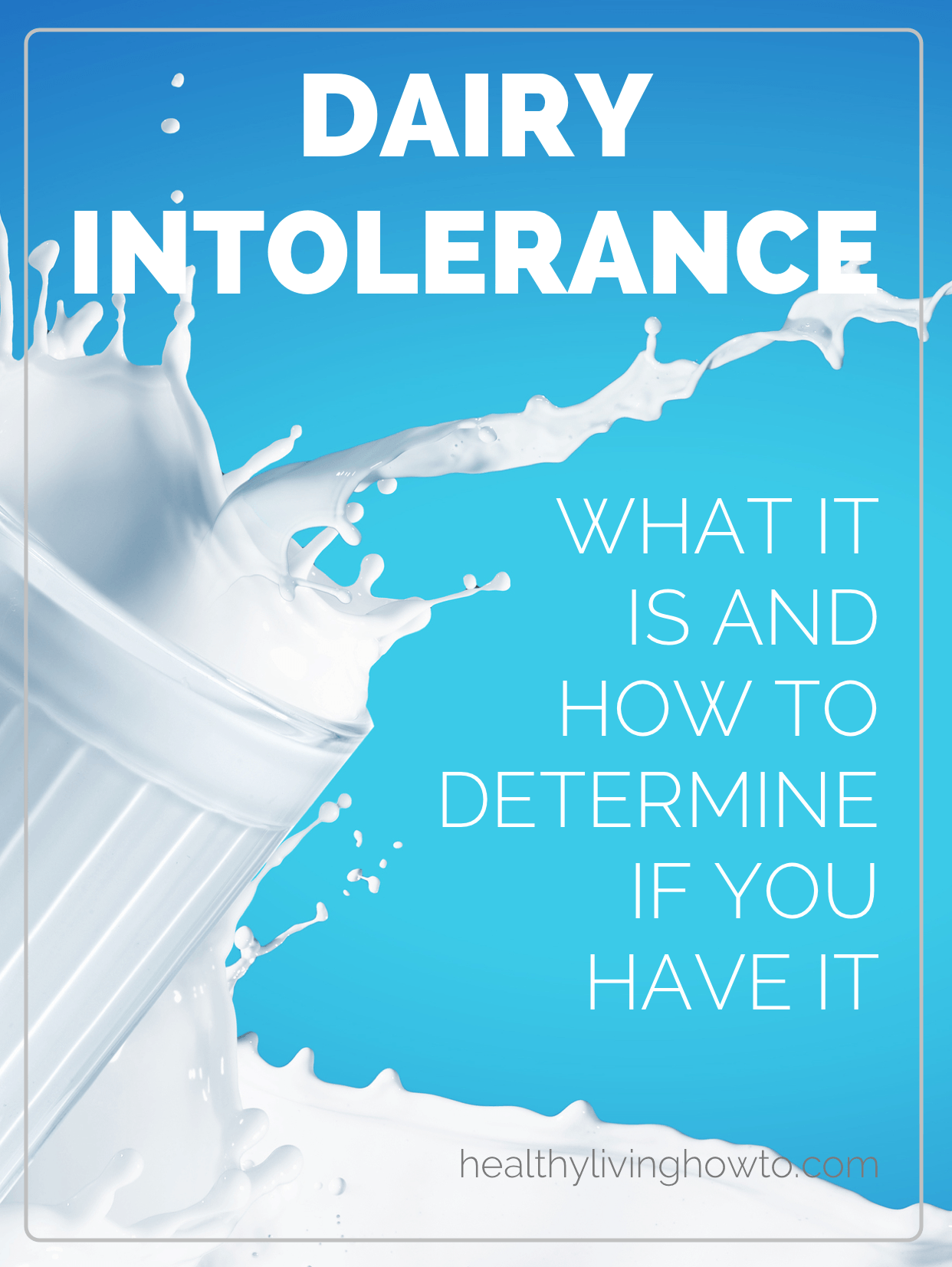 You may also be able to prevent a reaction. For example, if you have lactose intolerance, you may be able to drink lactose-free milk or take lactase enzyme pills (Lactaid) to aid digestion.
You may also be able to prevent a reaction. For example, if you have lactose intolerance, you may be able to drink lactose-free milk or take lactase enzyme pills (Lactaid) to aid digestion.
Causes of food intolerance include:
- Absence of an enzyme needed to fully digest a food. Lactose intolerance is a common example.
- Irritable bowel syndrome. This chronic condition can cause cramping, constipation and diarrhea.
- Sensitivity to food additives. For example, sulfites used to preserve dried fruit, canned goods and wine can trigger asthma attacks in sensitive people.
- Recurring stress or psychological factors. Sometimes the mere thought of a food may make you sick. The reason is not fully understood.
- Celiac disease. Celiac disease has some features of a true food allergy because it involves the immune system. Symptoms often include gastrointestinal issues as well as those unrelated to the digestive system, such as joint pain and headaches.
 However, people with celiac disease are not at risk of anaphylaxis. This chronic digestive condition is triggered by eating gluten, a protein found in wheat and other grains.
However, people with celiac disease are not at risk of anaphylaxis. This chronic digestive condition is triggered by eating gluten, a protein found in wheat and other grains.
If you have a reaction after eating a particular food, see your doctor to determine whether you have a food intolerance or a food allergy.
If you have a food allergy, you may be at risk of a life-threatening allergic reaction (anaphylaxis) — even if past reactions have been mild. Learn how to recognize a severe allergic reaction and know what to do if one occurs. You may need to carry an emergency epinephrine shot (Adrenaclick, Auvi-Q, EpiPen) for emergency self-treatment.
If you have a food intolerance, your doctor may recommend steps to aid digestion of certain foods or to treat the underlying condition causing your reaction.
April 03, 2020
Show references
- Guidelines for the diagnosis and management of food allergy in the United States: Summary for patients, families and caregivers.
 National Institute of Allergy and Infectious Diseases. https://www.niaid.nih.gov/diseases-conditions/food-allergy. Accessed Feb. 18, 2017.
National Institute of Allergy and Infectious Diseases. https://www.niaid.nih.gov/diseases-conditions/food-allergy. Accessed Feb. 18, 2017. - Burks W. Clinical manifestations of food allergy: An overview. http://www.uptodate.com/home. Accessed Feb. 18, 2017.
- Food intolerance. National Health Service. http://www.nhs.uk/conditions/food-intolerance/pages/introduction.aspx. Accessed Feb. 20, 2017.
- Irritable bowel syndrome (IBS). National Institute of Diabetes and Digestive and Kidney Diseases. https://www.niddk.nih.gov/health-information/digestive-diseases/irritable-bowel-syndrome/all-content. Accessed Feb. 20, 2017.
- Li JT (expert opinion). Mayo Clinic, Rochester, Minn. May 15, 2019.
See more Expert Answers
Products and Services
- Book: Mayo Clinic Family Health Book, 5th Edition
- Newsletter: Mayo Clinic Health Letter — Digital Edition
.
Dairy allergy, sensitivity, or lactose intolerance. Know the difference – VitruviaMD
I can’t tell you how many times I hear people say they are lactose intolerant and can’t drink milk but can eat cheese and they “feel” fine only to discover that it’s not a lactose intolerance at all but a dairy sensitivity or allergy. There are important differences and you need to know how to figure this out. If you suspect you have an issue with dairy then READ ON to learn more about the differences between lactose intolerance, dairy allergy and dairy sensitivity.
Hint…if you have bloating, diarrhea, abdominal pain, drippy nose, congestion, eczema, joint pain, hives then you might have a reaction to dairy.
Lactose is the sugar (or carbohydrate) found in dairy products. When we eat dairy products lactose is normally broken down by an enzyme called lactase which is produced in the lining of the small intestine. Most infants produce lactase (which breaks down the lactose) but starting around the age of 2 lactase levels can start to decline in some people. The older you are the more your lactase levels may decrease which is why people will say they never had trouble before but as they aged they developed problems. An estimated 65% of people have the reduced capacity to break down lactose. If you are missing the enzyme lactase then you will be “lactose intolerant”. Symptoms of lactose intolerance are abdominal pain, bloating, or diarrhea usually within 30-120 minutes after eating dairy products.
The older you are the more your lactase levels may decrease which is why people will say they never had trouble before but as they aged they developed problems. An estimated 65% of people have the reduced capacity to break down lactose. If you are missing the enzyme lactase then you will be “lactose intolerant”. Symptoms of lactose intolerance are abdominal pain, bloating, or diarrhea usually within 30-120 minutes after eating dairy products.
A dairy allergy occurs when a person has an immune reaction to the protein in dairy: casein or whey. Reactions can result in anaphylaxis, breathing difficulty, rashes, hives, wheezing, swelling, eczema among other symptoms and are often immediate. Dairy allergies are very common in infants and young children. Approximately 2 in every 100 children under the age of 4 will have a dairy issue. This can continue on into adulthood but it has also been shown if dairy is removed from their diet completely sometimes they can resume eating dairy after about 8 years of age.
A dairy sensitivity occurs when a person is having a reaction that is usually a result of histamine being released in response to casein or whey. Symptoms can include bloating, gas, diarrhea, abdominal pain, rashes, eczema, drippy nose, congestion, fatigue, joint pain, headaches, just to name a few. Symptoms can occur quickly or be delayed by several days making it difficult in figuring out what is causing the issue.
Symptoms are very similar in many cases with dairy allergies, sensitivities or lactose intolerance. So how do you tell the difference?
If you have only a lactose intolerance then all you have to do is add the supplement like lactaid when you eat dairy or use lactose free dairy products and your symptoms should be completely eliminated. You can also do a special test called a lactose tolerance test which requires you to drink a liquid that contains lots of lactose. Two hours later, the amount of glucose is measured in the blood stream. If your glucose doesn’t rise then you are not digesting the lactose.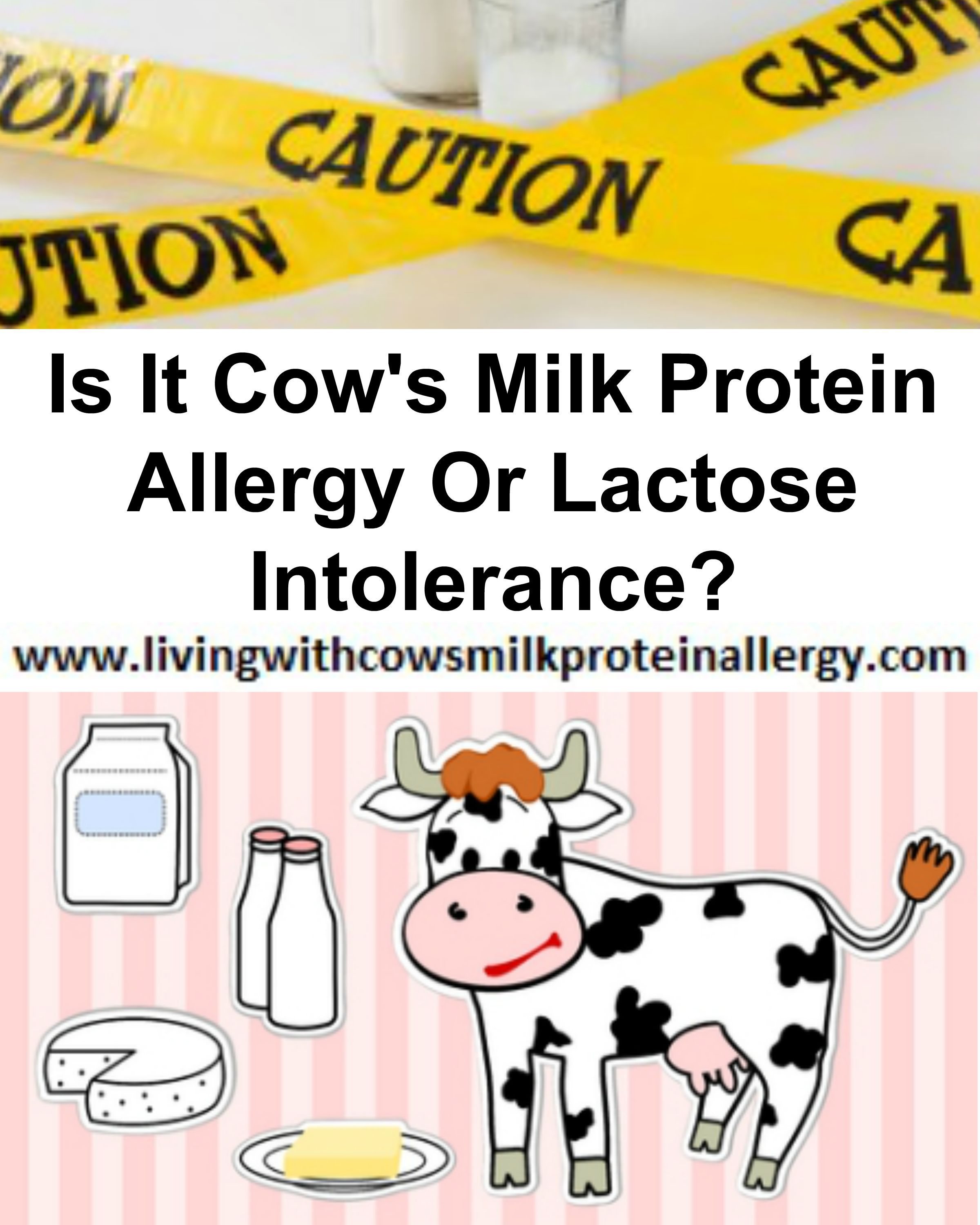
To understand the difference between testing for dairy allergy and dairy sensitivity we need to dive into what IgE and IgG mean.
IgE (immunoglobulin E) antibodies are released in response to allergens that come from food or the environment as an immune response. They produce immediate responses and can be very severe. All anaphylactic reactions are IgE reactions. True dairy allergies are an IgE response. Testing for an IgE dairy allergy involves the skin prick test (RAST testing) where a small drop of liquid containing the dairy allergen is injected under your skin and then watched for a reaction. There is now a blood test that looks at IgE reactions, too.
IgG (immunoglobulin G) antibodies are the antibodies that are released to provide long-term resistance to infections but can also be made to foods. Their half-life is a lot longer than IgE and is around 28 days. This is why reactions can occur within hours to days after an exposure and are called a sensitivity. Testing for the IgG dairy sensitivity involves a blood draw and evaluating (in most tests) the amount of histamine being produced. The more histamine produced means the sensitivity is more severe. IgG reactions are the so-called delayed reactions and are usually not tested by allergists. An important note is I have found regardless if it is an IgE or an IgG reaction, the symptoms can be very similar and can be immediate or delayed with the exception of IgE anaphylactic reactions.
Testing for the IgG dairy sensitivity involves a blood draw and evaluating (in most tests) the amount of histamine being produced. The more histamine produced means the sensitivity is more severe. IgG reactions are the so-called delayed reactions and are usually not tested by allergists. An important note is I have found regardless if it is an IgE or an IgG reaction, the symptoms can be very similar and can be immediate or delayed with the exception of IgE anaphylactic reactions.
As long as you don’t have anaphylactic reactions, if you suspect you have an issue with dairy and think it is just lactose intolerance then switch all your dairy to lactose free products. If you still have an issue then it is not a lactose intolerance issue but is a dairy issue. To determine if you have a dairy issue remove it from your diet 100%. Yes, that means no milk, sour cream, ice cream, cheese, yogurt and even butter. Do this for 3 weeks and then reintroduce one item at a time and see how you feel when you reintroduce it.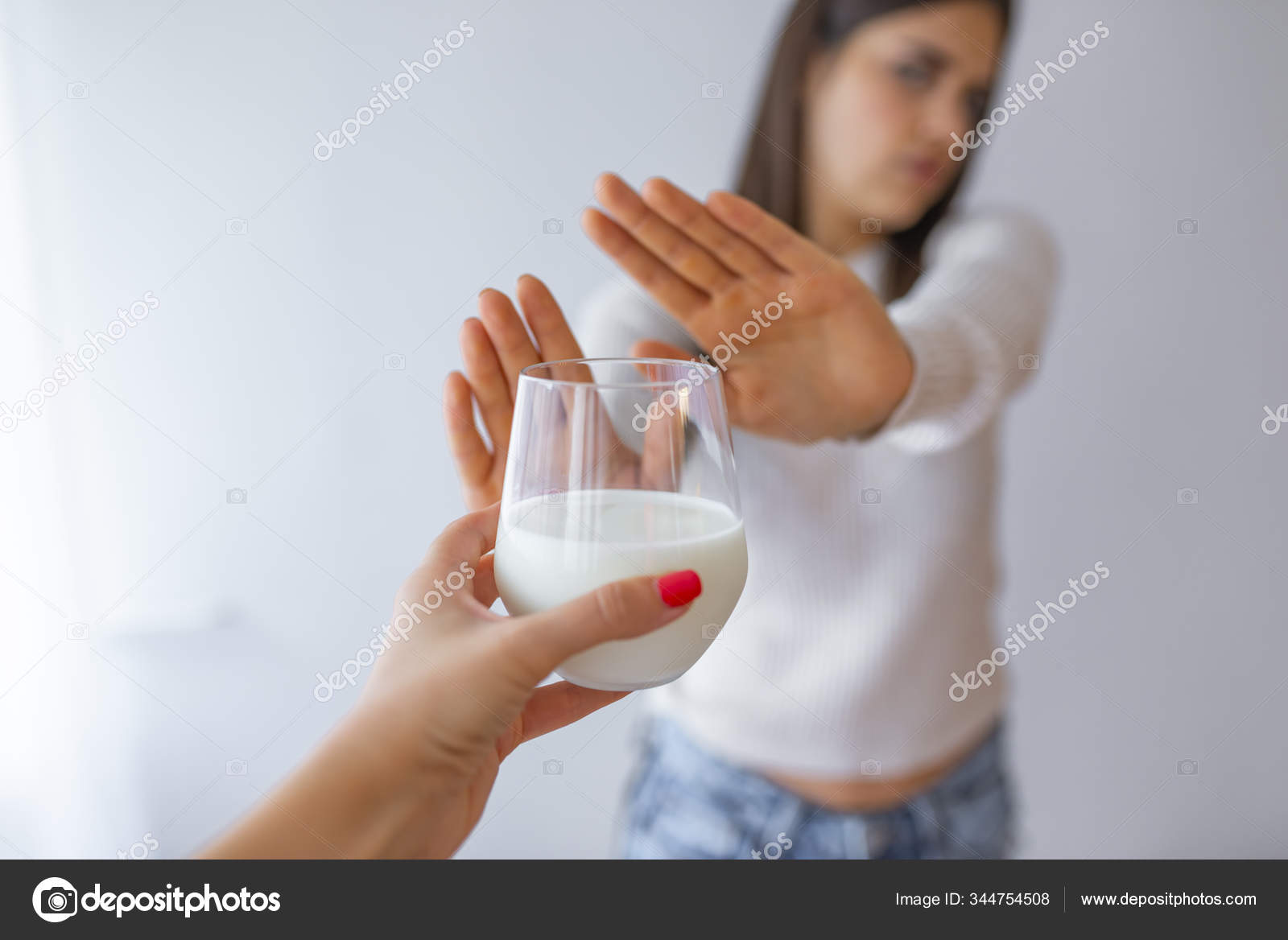 Dairy is a bit tricky because each product has different amounts of lactose, different amounts of casein and different amounts of whey. You might react to cheddar cheese but be ok with mozzarella. You may also notice it is dose dependent meaning you can have a small amount of dairy but when you eat a lot of it there is a problem. Some people may be sensitive to all forms of dairy and even cross over into other types of milk like goat or sheep. If you don’t want to do an elimination diet then get the blood testing for IgE or IgG (we offer both). If you do a food allergy or food sensitivity test and they say it is ok to eat that product but you feel bad eating it then DON’T eat it!! There are other pathways to react to allergens that are not easily tested so bottom line is if you suspect you have a problem with a food, eliminate it and see how you feel.
Dairy is a bit tricky because each product has different amounts of lactose, different amounts of casein and different amounts of whey. You might react to cheddar cheese but be ok with mozzarella. You may also notice it is dose dependent meaning you can have a small amount of dairy but when you eat a lot of it there is a problem. Some people may be sensitive to all forms of dairy and even cross over into other types of milk like goat or sheep. If you don’t want to do an elimination diet then get the blood testing for IgE or IgG (we offer both). If you do a food allergy or food sensitivity test and they say it is ok to eat that product but you feel bad eating it then DON’T eat it!! There are other pathways to react to allergens that are not easily tested so bottom line is if you suspect you have a problem with a food, eliminate it and see how you feel.
Lactose is a key filler in MANY prescription medications which always surprises me since so many people cannot break this down. I have had several patients that required alternate medications that were lactose free to not react so if you have identified that lactose (or dairy) is a problem for you check google for the inactive ingredient list of your medication. If it has lactose then ask your doctor for a lactose free option. Don’t stop a medication without your physicians guidance though.
I have had several patients that required alternate medications that were lactose free to not react so if you have identified that lactose (or dairy) is a problem for you check google for the inactive ingredient list of your medication. If it has lactose then ask your doctor for a lactose free option. Don’t stop a medication without your physicians guidance though.
What if you remove dairy and you are still having a lot of symptoms? Then look for another food causing them. I am a huge believer in the power of food helping you feel better as well as making you feel worse. Just because you never had trouble with a food in the past doesn’t mean it won’t develop in the future. I believe this is because our gut in general is compromised with the exposure of antibiotics and toxins. In addition, our food has really changed in so many ways that it is often unrecognizable to our GI systems which will create a cascade of symptoms.
There are so many dairy free alternatives available now. If you have a lactose or dairy issue then find products you like as substitutes and do your best to avoid the others. Your body will thank you! If dairy is something you just can’t live without then consider doing allergy drops (for IgG sensitivities) or allergy shots (for IgE allergies) as these might help you be able to reintroduce foods at a later date.
If you have a lactose or dairy issue then find products you like as substitutes and do your best to avoid the others. Your body will thank you! If dairy is something you just can’t live without then consider doing allergy drops (for IgG sensitivities) or allergy shots (for IgE allergies) as these might help you be able to reintroduce foods at a later date.
To your health,
Laura
What Is The Difference Between Lactose Intolerance And Dairy Allergy
Reading Time: 6 minutes
Lactose intolerance and cow’s milk allergy often get mixed up. Lactose intolerance is caused by a lack of an enzyme that helps you to digest the sugar in milk. Cow’s milk allergy, on the other hand, is an adverse immune reaction to proteins found in milk. They are completely unrelated conditions except that they share a common cause – cow’s milk and dairy products.
After returning from the Beagle expedition in 1836, Charles Darwin wrote: “I have had a bad spell. Vomiting every day for eleven days, and some days after every meal.”
Vomiting every day for eleven days, and some days after every meal.”
Darwin struggled for more than 40 years with long bouts of vomiting, stomach cramps, headaches, severe tiredness, skin problems, and depression. Researchers now think that he had lactose intolerance, and his case is a good example of how easily it can be missed or misdiagnosed.
What is lactose?
Lactose is the sugar in mammal’s milk. In order to release its energy, it must be broken down into its constituent simple sugars – glucose and galactose – so they can be absorbed. This task falls to an enzyme called lactase, produced by cells lining our small intestines
If your body doesn’t produce this enzyme, then lactose travels to the large intestine where it is fermented by gut bacteria, producing hydrogen and a range of potential toxins.
What is lactose intolerance?
This is ‘lactose intolerance’, and most symptoms result from the production of gases and toxins by these gut bacteria.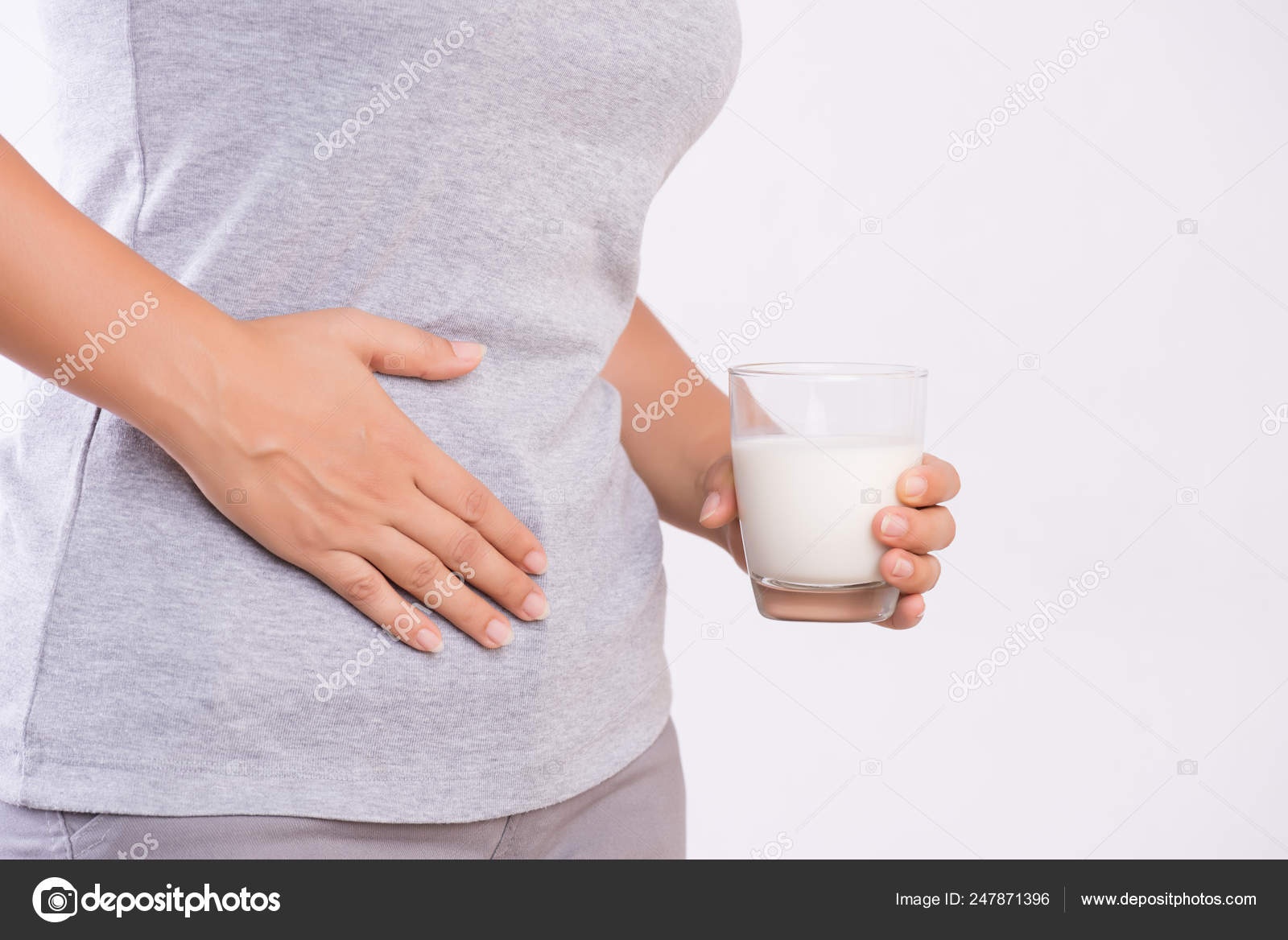 Symptoms include a bloated and painful stomach, wind, diarrhea, and, on some occasions, nausea and vomiting.
Symptoms include a bloated and painful stomach, wind, diarrhea, and, on some occasions, nausea and vomiting.
Other symptoms can include muscle and joint pain, headaches, dizziness, lethargy, difficulty with short-term memory, mouth ulcers, allergies, irregular heartbeat, sore throat, increased need to pass urine, acne, and depression.
Even more worrying is that the toxins produced by bacteria may play a key role in diseases such as diabetes, rheumatoid arthritis, multiple sclerosis, and some cancers.
Lactase and weaning
Everyone naturally produces lactase when they are babies – without it we couldn’t drink our mother’s milk. However, all mammals and the vast majority of people stop producing it soon after weaning – for us, around the age of two. This is the normal state for most people – around 70 percent of the world’s population, in fact.
In Northern Central Europe, lactose intolerance affects between two and 20 percent of people, rising to 40 percent in Mediterranean countries – most common in Italy where it affects 56-70 percent in some regions.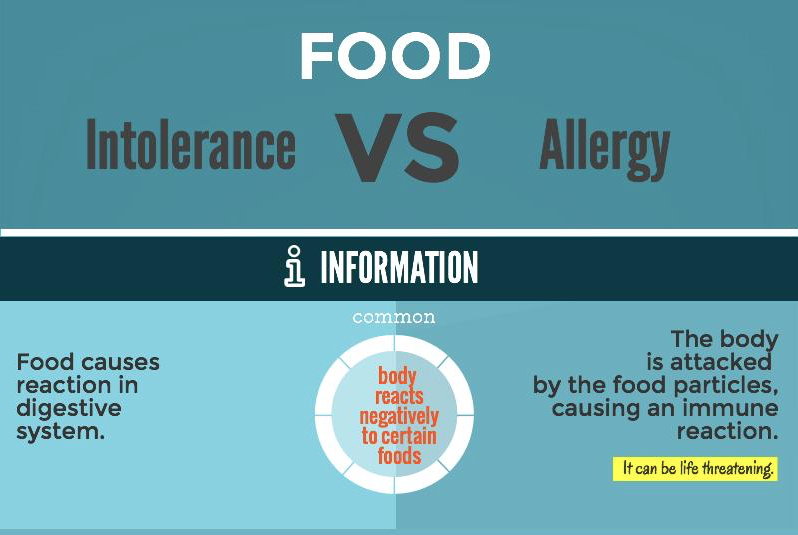
Highest rates are seen in Africa, where it affects 65-75 percent of people, and Asia, where more than 90 percent of people are lactose intolerant.
Lactase persistence
So why are some people able to digest lactose after weaning and others not?
‘Lactase persistence’ originates from a genetic mutation that occurred among a small number of European and African pastoral tribes within the last 5,000-10,000 years – in evolutionary terms, this is very recent history.
It provided a selective advantage to populations using dairy products, enabling them to live long enough to have children. The average life expectancy was probably little more than 25 years, but this meant the ability to digest lactose could be passed on to subsequent generations.
Descendants of these people are still able to consume cow’s milk without suffering the symptoms of lactose intolerance. It doesn’t mean, however, that it’s good for them.
Ditching lactose
The treatment for lactose intolerance is straightforward: avoid lactose. It means cutting out all cow’s milk, and other dairy foods and checking labels as lactose is added to many unlikely foods, including bread, breakfast cereals, salad cream, mayonnaise, biscuits, chocolate, cake, crisps, instant soup and some processed meats, such as sliced ham.
It means cutting out all cow’s milk, and other dairy foods and checking labels as lactose is added to many unlikely foods, including bread, breakfast cereals, salad cream, mayonnaise, biscuits, chocolate, cake, crisps, instant soup and some processed meats, such as sliced ham.
The word ‘lactose’ will not necessarily be listed on food labels so look out for things like dried milk or whey powder.
Lactose is also used as a filler in many types of medication and while this may not trigger symptoms in most people with lactose intolerance, it can cause problems in some. Check with your doctor and request lactose-free tablets.
Cow’s milk allergy
Cow’s milk allergy is very different to lactose intolerance. An allergic reaction is when the body’s immune system launches an inappropriate response to substances mistakenly perceived as a threat.
Common triggers include latex, detergent, dust, pollen or certain proteins in food. In cow’s milk, it is the protein casein that causes most problems, but whey protein can also trigger a reaction in some people.
General symptoms include inflammation, sneezing, runny nose, itchy eyes, and so on, giving rise to the classic allergies – asthma, eczema, hay fever, and urticaria (skin rash or hives). Because cow’s milk allergy is linked to many conditions – including asthma and eczema – it’s always useful to consider it when treating them.
Dairy can cause health issues for a range of people (Photo: Adobe. Do not use without permission)
Common allergy
Cow’s milk allergy is one of the most common food allergies in children, affecting between two and 7.5 percent of infants under one, although some grow out of it by the age of five.
Symptoms include an itchy rash or swelling, stomach ache, vomiting, colic, diarrhea or constipation, and a runny nose. Symptoms can appear almost immediately or up to 72 hours after consuming cow’s milk protein. This makes it difficult to diagnose.
A big problem affecting infants can be gastrointestinal bleeding resulting from cow’s milk allergy. Blood loss often occurs in such small quantities that it goes unnoticed but over time can cause iron-deficiency anemia.
Blood loss often occurs in such small quantities that it goes unnoticed but over time can cause iron-deficiency anemia.
Scientists suggest that blood loss associated with cow’s milk consumption during infancy may affect 40 percent of otherwise healthy infants. Exactly how cow’s milk causes blood loss from the intestines is unclear but it’s generally agreed that it is probably an adverse immune (allergic) reaction.
However, because healthy infants lose some blood anyway and cow’s milk-induced bleeding is clinically silent and shows no other symptoms, it’s difficult to say how many more infants than the widely accepted figure of less than 10 percent may actually be allergic to cow’s milk.
Not good for kids
Regardless of these problems, it’s simply not a good idea to give cow’s milk to children at all as it contains virtually no iron but does contain potent inhibitors, reducing the body’s ability to absorb iron from other foods in the diet.
The high protein, sodium, potassium, phosphorus, and chloride content of cow’s milk present what is called a ‘high renal solute load’.
Unabsorbed solutes from the diet must be excreted by the kidneys and this can place a strain on immature kidneys, forcing them to draw water from the body thus increasing the risk of dehydration. This is why most health bodies say that cow’s milk should not be given to children under 12 months of age.
Developing allergies
Although a lot of food allergies start in childhood, you can develop them as an adult, too. Cow’s milk allergy in adults is relatively rare, but symptoms tend to be much more severe than in children when they do occur, with reactions being triggered by amounts as low as 0.3 milligrams of cow’s milk protein.
The most severe type of allergic reaction (anaphylactic shock) may involve difficulty in breathing, a drop in blood pressure, and ultimately heart failure and death.
Occasionally, cow’s milk allergy can cause severe symptoms that come on suddenly, such as swelling in the mouth or throat, wheezing, coughing, shortness of breath, and difficulty breathing. In such cases, immediate medical help must be sought.
In such cases, immediate medical help must be sought.
There are a range of dairy-free alternatives available (Photo: Adobe. Do not use without permission)
Avoiding cow’s milk
The only reliable treatment for cow’s milk allergy is to avoid all cow’s milk and dairy products, including milk, milk powder, milky drinks, cheese, butter, margarine, yogurt, cream, and ice-cream.
Products with hidden milk content should also be avoided – look out for: casein, caseinates, hydrolyzed casein, skimmed milk, skimmed milk powder, milk solids, non-fat milk, whey, and milk solids.
People with cow’s milk allergy face a similar problem as those avoiding lactose – milk-based ingredients can be difficult to avoid as they are commonly used in the production of so many foods. It can seem a daunting prospect, having to read the ingredients labels, but most supermarkets now produce product ‘free-from’ lists, and many have their own-label range.
There are even iPhone apps available now to help you identify ingredients by scanning the product bar code. Soya ice creams, spreads and yogurts, and dairy-free cheeses are just some ‘free-from’ examples.
Soya ice creams, spreads and yogurts, and dairy-free cheeses are just some ‘free-from’ examples.
The calcium myth
It’s a myth that people who avoid dairy miss out on calcium – there are many excellent non-dairy sources, including green leafy vegetables (spinach is a relatively poor source as it contains oxalate which binds calcium), dried fruits, nuts and seeds, calcium-set tofu and calcium-fortified soy milk. Remember, 70 percent of the world’s population don’t do dairy – so you’re not alone.
Dairy consumption in the UK is in decline as the market for plant-based milks, vegan cheese, yogurt, and other alternatives is booming. Whether you are lactose intolerant, allergic to cow’s milk protein, or simply want to cut out dairy for health reasons, the animals or the environment, there’s never been a better time to go dairy-free.
Going vegan has never been easier, there are vegan foods labeled as such in every major supermarket. Find out how easy it is on Viva!’s website here
Milk Allergy | Causes, Symptoms & Treatment
Avoidance of milk or items containing milk products is the only way to manage a milk allergy. People who are allergic to milk and the parents of children who have this allergy must read ingredient labels very carefully.
People who are allergic to milk and the parents of children who have this allergy must read ingredient labels very carefully.
Milk is one of eight allergens with specific labeling requirements under the Food Allergen Labeling and Consumer Protection Act of 2004. That law requires manufacturers of packaged food products sold in the U.S. and containing milk as an ingredient to include the presence of milk or milk products, in clear language, on the ingredient label.
There are two main types of milk protein — casein and whey. Casein, the “solid” part of milk, comprises about 80 percent of milk protein. Whey proteins, found in the liquid part of milk, make up the other 20 percent. Milk proteins are found in many foods, including all dairy products, and in many places where they might not be expected. For example, some canned tuna, sausage, meats and other nondairy products may contain casein. Beverage mixes and body-building and energy drinks commonly contain whey. Milk protein has also been found in some chewing gum.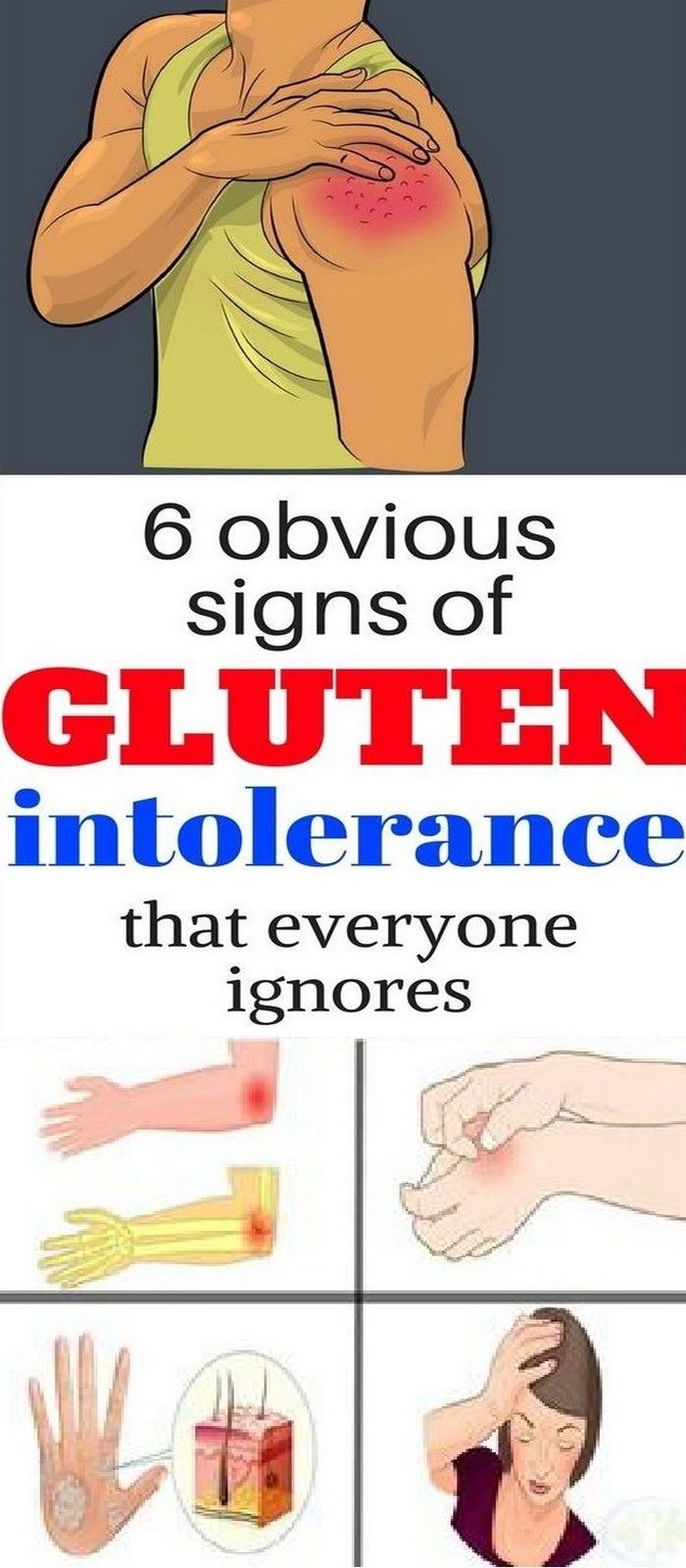
Some companies may voluntarily include information that their food products “may contain traces of milk” or that they are manufactured in a facility that also processes milk, though such advisory statements are not required by law.
Allergies to food (including milk) are the most common causes of anaphylaxis, a potentially life-threatening allergic reaction. Symptoms include swelling of the airways, impairing the ability to breathe, and a sudden drop in blood pressure, causing dizziness and fainting. An allergist will advise patients with a food allergy to carry an auto-injector containing epinephrine (adrenaline), which is the only treatment for anaphylactic shock, and will teach the patient how to use it. If a child has the allergy, teachers and caregivers should be made aware of his or her condition as well.
Some people with this allergy can tolerate foods containing milk that has been extensively heated, such as a baked muffin. Still, people with an allergy to milk protein should consult an allergist before determining whether they should completely avoid milk and other dairy products.
Milk is a fairly easy ingredient to substitute in recipes. Most recipes calling for milk can be just as successful by substituting the equivalent in water, juice, or soy or rice milk. If your infant is allergic to milk, talk to your pediatrician about which formula to use. Often, an extensively hydrolyzed elemental formula or a casein-hydrolysate formula is recommended for milk allergy in infants, as the proteins in these formulas have been extensively broken down. Alternatively, your infant’s doctor may recommend a soy-based formula.
The Difference Between a Dairy Allergy, Lactose Intolerance, and Dairy Sensitivity
Dairy Allergy, Lactose Intolerance, or Dairy Sensitivity: What’s the Difference?
You’re not alone when it comes to shying away from ice cream, milk, and cheese. Some people’s bodies have trouble breaking down dairy products or have an adverse immune system reaction. But, there’s a lot to know about dairy in its many forms, according to The Dairy Alliance and Food Allergy Research & Education (FARE). In the case of dairy sensitivity, you may be able to tolerate specific dairy products, like a2 Milk®.
In the case of dairy sensitivity, you may be able to tolerate specific dairy products, like a2 Milk®.
What is a Dairy Allergy?
A milk allergy triggers an overreaction in your immune system, causing an allergic reaction. The response can vary from mild, such as rashes and itching, to severe, such as difficulties breathing and loss of consciousness. Any food allergy can be life-threatening and needs to be monitored on an ongoing basis by a healthcare professional. If you are allergic to dairy, you should avoid dairy products in all forms.
What is Lactose Intolerance?
Dairy products contain a natural sugar called lactose. Your body is unable to break down those sugars when you don’t produce enough of the enzyme lactase, causing you to be lactose intolerant. You can ask your doctor about taking a test to get this diagnosis.
Symptoms of lactose intolerance include abdominal pain, gas, diarrhea, bloating, and nausea approximately 30 minutes to two hours after having milk-based products.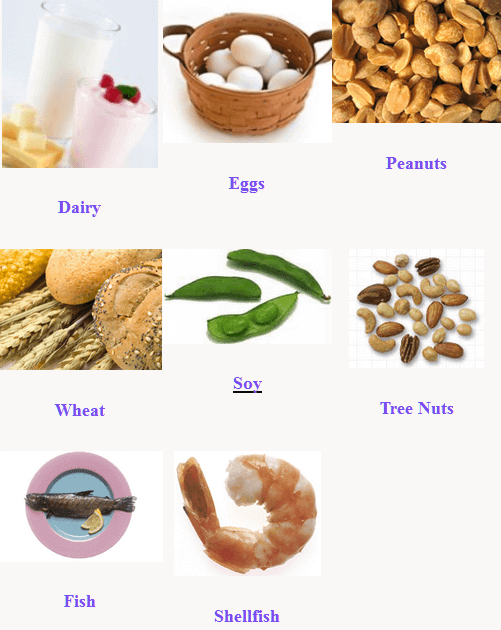
Managing lactose intolerance is possible by choosing dairy products that have little to no lactose. You should not drink a2 Milk® if you have been diagnosed as lactose intolerant.
What is Dairy Sensitivity?
Some people may self-diagnose as lactose intolerant, or just have a dairy sensitivity. Do you occasionally have discomfort from enjoying milk on cereal? Can certain dairy foods sometimes give you stomach discomfort? You are likely experiencing a mild dairy sensitivity and may be intolerant to the A1 protein that is found in regular milk.
If you have a dairy sensitivity and want to give dairy products another try, consider a2 Milk®. Published research suggests that a2 Milk® is easier on digestion and may help some avoid discomfort. You can find a2 Milk® at a nearby store or online retailer using this search tool.
Good to know about MILK ALLERGY (melk)
MILK ALLERGY
Useful information on milk allergy – Fact sheet of the Norwegian Asthmatics and Allergy Association
What is milk allergy?
If you are allergic to cow’s milk protein, the body’s immune system can react strongly by producing antibodies (IgE), or by activating inflammatory cells. With every meal containing milk proteins, an allergic reaction of the immune system is observed in the form of the release of mediators such as histamine, or a T-cell inflammatory response.Histamine is produced in several places in the body and leads to symptoms such as diarrhea, nausea, abdominal pain, or skin lesions (hives, eczema).
With every meal containing milk proteins, an allergic reaction of the immune system is observed in the form of the release of mediators such as histamine, or a T-cell inflammatory response.Histamine is produced in several places in the body and leads to symptoms such as diarrhea, nausea, abdominal pain, or skin lesions (hives, eczema).
Cow’s milk contains over 25 different proteins that can cause a reaction in “dairy” allergy sufferers. For most, more than one type of protein can cause an allergic reaction. The milk of other artiodactyls such as goat, horse and buffalo contains many of the same proteins. Therefore, allergy sufferers should not consume the milk of cloven-hoofed animals at all.
If a nursing mother herself consumes cow’s milk, some proteins can be transferred with the mother’s milk into the baby’s body and lead to negative consequences. Therefore, a breastfeeding mother should follow a dairy-free diet.
Cow’s milk allergy is not the same as lactose intolerance. The latter is due to the reduced ability of the body to digest milk sugar (lactose). Lactose intolerance leads to stomach pain and diarrhea as a result of consuming large amounts of dairy products with high levels of lactose (sweet milk, brown (goat’s) cheese, ice cream and cream).
The latter is due to the reduced ability of the body to digest milk sugar (lactose). Lactose intolerance leads to stomach pain and diarrhea as a result of consuming large amounts of dairy products with high levels of lactose (sweet milk, brown (goat’s) cheese, ice cream and cream).
Symptoms
The symptoms of milk allergy are very individual. For some, they are minor and safe, while others may have a severe allergic reaction, even with a small amount of milk. Gastrointestinal upset is common. Not so often there is itching in the mouth and throat, swelling of the mucous membranes and breathing problems, which is especially common in young children. It is also common for them to develop eczema and hives on the skin.
Who is affected?
Milk allergy is the most common type of allergy in young children, which is explained by the early inclusion of cow’s milk in the diet of infants (for example, in cereals or in breast milk substitute). About 2-5% of Norwegian babies (0-3 years old) suffer from this type of allergy.
Diagnostics
In order to determine the presence of milk allergy, the doctor must familiarize himself with the patient’s medical history, as well as take a blood test for the presence of allergic antibodies and a Pirquet test.Not all milk allergy sufferers will show positive results on these tests. This is especially true for infants with symptoms such as vomiting, diarrhea, or blood in the stool. The only reliable way to find out if milk is causing these symptoms is to eliminate milk from the diet for a period of time. When in doubt, it should be injected back into the diet and checked to see if symptoms return. For children who have not received milk for some time due to allergies, a control test using cow’s milk should be performed to ensure that there is no allergic reaction.
Forecasts
Generally, cow’s milk allergy has a fairly good prognosis. Most of the children get rid of it before they reach school age. Breastfeeding babies who have had negative test results are often allowed to resume milk intake after half a year or a year. It is not known how many adults suffer from milk allergy, but it is estimated that this number does not exceed one percent of the population.
Where is milk protein found?
Milk is found in many semi-finished and industrial food products.Therefore, when buying a product, it is important to familiarize yourself with the list of substances it contains. All ingredients containing milk must be declared on the goods declaration. A specific group of words used in such lists indicates the content of milk protein in the product:
Cream-fresh, cream, ice cream, casein, caseinate, feta cheese, lactalbumin, margarine, whey, whey powder, cheese, cheese powder, sour cream, butter, yogurt, yoghurt powder.
Cocoa butter, lactic acids and group E substances do not contain milk protein.
Ration
Milk is an important source of nutrients in the Norwegian diet. 25% of the protein that children get, 70% of the iodine and about 70% of the calcium come from dairy products. That is why, in cases where dairy products are excluded from the diet, these products should be replaced with others that will ensure the intake of the above nutrients. Alternatively, specially formulated additives can be used.
How to replace milk?
– Drinks: A hypoallergenic milk replacer is recommended for young children, which can be purchased at the pharmacy.These products can be bought at the pharmacy or with a “blue prescription” (concessional prescription). Because of their taste, it can be difficult for older children to get used to these milk replacers, it is recommended to start using the milk replacers as early as possible, for example while breastfeeding. Young people and adults can use milk substitutes such as rice milk, oat milk, etc. The amount of calcium in these products is similar to that in cow’s milk, but these drinks are often lower in protein and nutrients.
– Food preparation: Milk substitutes available at the pharmacy can be used in most meals. Soy milk, rice milk, or coconut milk can be used depending on what you are cooking.
– Other Substitutes: The following products are available in a dairy-free version – margarine, sour cream, yoghurt, ice cream and cream substitutes based on soy, rice or oats.
Milk allergy, symptoms of milk intolerance
If you ask mothers if their child is allergic to milk, about one in five will answer YES.But when examining these children, the allergy will be confirmed in about 10% of those examined. Milk allergy is a much rarer condition than it is thought. About less than 1% of children, and only 0.1-0.3% of adults.
The concept of milk intolerance (or cow’s milk protein – BCM) includes the allergy itself and other reactions to dairy products (for example, lactose intolerance).
Allergy is a narrower disease, it is always based on the participation of immune mechanisms.
– Production of IgE to BCM.This allergy is also called immediate, anaphylactic. Symptoms appear within 2 hours of using CMP and can be severe or even fatal;
– Allergy without IgE participation (delayed). Symptoms may appear within 48 hours. Does not pose a serious hazard.
Milk contains several proteins that most commonly cause allergic reactions:
– Casein. Most dangerous. Causes severe reactions due to the fact that it is resistant to heat treatment and gastrointestinal enzymes.Found in the milk of other animal species;
– Alpha-lactoalbumin. Not stable at high temperatures (thermolabile). If you are allergic to it, you can eat foods that have undergone heat treatment. May cross-react with chicken egg ovalbumin;
– Beta-lactoglobulin. It is thermolabile;
– Bovine serum albumin – heat labile, may cross-react with beef.
To find out which specific cow’s milk protein is allergic, you can donate blood for IgE to specific proteins.This study is called molecular allergy diagnostics.
CMP allergy symptoms:
IgE-dependent diseases:
– On the part of the skin – urticaria, exacerbation of atopic dermatitis;
– From the respiratory system – rhinitis, asthma 4
– Systemic reaction – Anaphylaxis.
Without participation IgE:
– From the side of the skin – exacerbation of atopic dermatitis;
– From the gastrointestinal tract – Enteropathy, gastroenterocolitis and proctocolitis induced by food proteins, eosinophilic esophagitis, constipation, colic, etc.- “gastroforms” of allergies.
If a reaction involves IgE, then such an allergy can be detected by tests (IgE blood to milk and individual molecules) and skin tests. If we see that the symptoms suggest an allergy without IgE involvement, we do not conduct research at all, because these types of allergies cannot be detected by tests.
For diagnostics in this case, “Diagnostic diets” are used. That is, we completely exclude all dairy products from the child’s diet (or mother’s, if the child is breastfed) for at least two weeks (with gastro-forms for a longer period) and see the result.If the symptoms are gone, we carry out the second stage of diagnostics – a provocative test. We introduce dairy products back and observe. If the symptoms have returned, then the allergy is confirmed and a “Healing” diet is not needed.
If we have excluded the product, but there is no reaction and the symptoms persist, we conclude that CMP has nothing to do with it. We are looking for another reason.
If the exclusion of the product gave a result and the symptoms went away, and the trial administration did not worsen the condition, we conclude that the improvement came from our other actions.BKM is not the reason.
The mainstay of treatment for CMP allergy will be the elimination of dairy products from the diet. The duration of the diet depends on the severity of the symptoms and can range from 6 months to lifelong. Your allergist should decide this question.
Can a child “outgrow” this type of allergy? Yes, and quite often. Allergy to CMP resolves in about 80% of children by school age.
If a child is an infant and is fed with milk formula, special mixtures of high hydrolysis or amino acid are used.Hypoallergenic mixtures are not shown.
Milk allergy and lactose intolerance
The terms milk allergy and lactose intolerance are often confused or thought to mean the same thing. However, these diseases have important differences that determine the daily diet.
Many people experience problems with the consumption of milk and dairy products, so it is important to distinguish between milk allergy and lactose intolerance.
What is milk allergy?
Although milk allergy is quite rare in adults, it is one of the most common allergies for babies and children . An allergic reaction is caused by proteins contained in milk . Symptoms start very quickly from the moment you consume dairy products. In addition to diarrhea and bloating, characteristic symptoms include itchy skin rash, asthma, atopic dermatitis and, in the worst case, anaphylactic shock that can lead to cardiac arrest.In most cases, allergies in children go away before they are ten years old.
Diet for milk allergy
People with milk allergies should completely stop consuming milk and dairy products . A wide variety of substitutes for milk, cream, yoghurt and vegetable cheese are available today. For people with milk allergies, lactose-free dairy products are also contraindicated.
What is lactose intolerance?
Just as proteins in milk and dairy products cause an allergic reaction in people with milk allergies, in people with lactose intolerance, unpleasant symptoms are caused by lactose . In such people lactase is either completely absent in the body, or is produced in very small quantities.As a result, the human body is unable to process the lactose contained in milk. The absence or lack of lactase interferes with the digestion of lactose in the intestine and thus stimulates bacterial growth in it. Characteristic signs of lactose intolerance are unquenchable thirst and various indigestion manifestations of diarrhea, bloating and abdominal pain after consuming milk and dairy products.
Diet for lactose intolerance
Unlike people with milk allergies, people with lactose intolerance can consume a wide variety of lactose-free dairy products .The latter are well tolerated by many dairy products, including hard cheese, since the lactose in these products is already naturally decomposed.
Compliance with lactose-free and gluten-free diets
Schär offers a wide range of products, lactose-free and gluten-free , to make you even more enjoyable. For many people with gluten intolerance, it is often difficult to maintain a healthy and varied diet of delicious food on a daily basis.Many baked goods and pastas, flours, breakfast cereals, biscuits and Schär sweets are not only gluten and lactose free, but also taste great. A list of Schär lactose-free products can be found here.
90,000 Allergy to dairy products or food intolerances?
A huge number of adults with and without celiac disease do not even realize that their body cannot absorb milk proteins.They try to eat as many “dietary” dairy products as possible. And they are getting worse and worse.
It is interesting that recently more and more information has begun to appear that dairy products should not be consumed by adults at all, regardless of whether they are allergic to milk or food intolerances (lactose or casein).
Many nutritionists openly state that the consumption of dairy products is most often the cause of bad skin and problems with the gastrointestinal tract.
It is dairy products, in their opinion, that cause various skin rashes (unfortunate acne), flatulence and other uncomfortable conditions.
Only dairy companies are unlikely to ever agree to this and will fight with all their might to prove otherwise.
Ignore the media advertisements touting the health benefits of dairy products. Yes. Dairy products are healthy, but only for very young children.
Therefore, if you have problems with your skin and gastrointestinal tract, it is quite possible that you are allergic to dairy products or food intolerances.
To find out it is necessary to visit a gastroenterologist and allergist.
How is allergy different from food intolerance?
These states are of a different nature. And therefore, you will have to behave individually in each case.
Allergy is a reaction of the immune system to milk protein. She perceives him as a foreign body.
Intolerance is caused by the fact that the body does not produce a specific enzyme to break down lactose or casein, which causes the corresponding reactions.
Here is some information on dairy allergies and food intolerances to help you get an overview of these phenomena. However, this does not cancel a visit to the doctors!
Allergy to dairy products
- The manifestation of a dairy allergy can vary greatly from person to person.
- The brightest and most frequent – difficulty breathing (the most dangerous is anaphylactic shock), nasal congestion, abdominal pain (colic, cramps, etc.)etc.), diarrhea, vomiting, nausea, skin rashes (eczema, dermatitis, etc.). Symptoms such as increased salivation, muscle pain, headaches, depression, anxiety, lack of concentration, etc. are less pronounced.
- It is almost impossible to cure allergies. To a greater extent, this applies to casein allergy. The only way to get rid of it is to eliminate all foods containing milk from the diet. Namely – any kind of milk, cream, sour cream, cheese, cottage cheese and yoghurts.In addition, you will have to give up milk chocolate, cakes, sweets and any other products to which milk in any form was added.
- Milk allergies are most common in young children and go away with age. Usually upon reaching the age of 3. Milk allergy is rare in adults.
Food intolerance
- The manifestation of food intolerances can vary from person to person as much as the manifestation of allergies.
- Symptoms of intolerance are similar to those of allergies. However, only allergies can cause such a serious consequence as anaphylactic shock.
- The most common symptoms of intolerance include diarrhea, nausea, gas, etc.
- It is believed that people with food intolerances (lactose or casein) need not give up dairy completely. The main thing is to determine the rate (amount) and types of dairy products that will not cause unpleasant symptoms.
- Food intolerances to dairy products can be congenital and acquired. And if allergy to dairy products in adults is rare, then food intolerance to dairy products is common. Millions of people around the world can boast of this feature of the body.
What to exclude from the diet with a complete rejection of dairy products?
- All products containing milk – milk, milk powder, cream, kefir, cheese, cottage cheese, margarine, etc.d.
- Sweets and chocolates containing dairy products.
- Mayonnaise and other sauces.
- Bakery products and pastries containing dairy products – cakes, pastries, pancakes, biscuits, etc.
- Ready-made soups-puree, ready-made products in deep fat or dough.
- Semi-finished products.
- Mixes of muesli.
- Mixes of herbs and spices, as well as mixtures for making creams and thickeners.
- Flavors
- Medicines containing lactose.
What about calcium? How to replace dairy products?
There is definitely no need to worry about this!
Calcium is found in other foods. And in much more!
Compare the calcium content per 100 grams of product:
- Cow’s milk 120
- Curd 95
- Poppy 1667
- Sesame 1474
- Sunflower seeds 367
- Almond 273
- Parsley 245
- Dried figs 144
- Cabbage 135
In other words, dairy products can be easily replaced.
For example:
- Soy products. Soy milk, tofu cheese, soy yogurt and other soy products. Plain milk can also be substituted for rice, coconut or almond drinks.
- Vegetables and herbs – broccoli, collard greens, turnips, parsley, etc.
- Nuts and seeds. Almonds, sesame seeds, sunflower seeds, etc.
- Fish – sardines, tuna and salmon.
- Milk without lactose and casein.Nowadays such dairy products are made by many manufacturers.
Can dairy allergies and food intolerances be cured?
In case of allergies, you will have to completely exclude from the diet all dairy and milk containing products.
In case of food intolerance, partial rejection of dairy and milk-containing products is possible. Here are the three main rules for a partial refusal – do not drink milk on an empty stomach, drink milk in small portions, if possible, use only well-digestible dairy products.
Pros and Cons of a Gluten & Lactose Free Diet
Unfortunately, dairy allergies and food intolerances often go alongside celiac disease. For people diagnosed with celiac disease, this can initially seem like a disaster, since they feel that they cannot eat anything at all.
Yes, life is changing after giving up gluten and dairy products.
But … For the better!
Now you will be constantly in creative search, get rid of excess weight, become noticeably prettier and, possibly, begin to develop professionally by leaps and bounds.
And all because your body will be cleansed of toxins, diseases will go away, the brain will start working one hundred percent.
It is not for nothing that many famous people and celebrities who do not suffer from celiac disease and intolerance to dairy products “sit” on a gluten-free and dairy-free diet.
Gluten and dairy intolerance is not the only reason for choosing this diet.
The reasons may be overweight, slagging of the body, diseases of the gastrointestinal tract, the possibility of a variety of diseases, including celiac disease, against the background of abuse of products containing gluten and dairy products.
Namely.
Many nutritionists consider the use of dairy products and products with gluten (even in the absence of intolerance) as a “gateway” for the toxic load of the body: since gluten increases the permeability of the intestinal walls, which impairs the quality of food digestion, and dairy products cause fermentation.
It takes about two months of a gluten-free and dairy-free diet for the intestines to return to a healthy state and decrease the permeability of the walls.These data were obtained experimentally.
Vegan Dairy Recipes
FOR INFORMATION. And with celiac disease, and in the absence of active gluten intolerance, gluten affects the intestines equally negatively !!! In healthy people, a compensatory mechanism is activated and part of the damage heals without having time to cause harm. But with the abuse of foods containing gluten, problems with the gastrointestinal tract can arise on the principle of accumulation.A gluten-free diet in this case is prevention.
Normalization of digestive processes directly affects both health and metabolism, which helps to quickly notice the result.
People who do not suffer from celiac disease and dairy intolerance are advised to adhere to a gluten-free and dairy-free diet for at least eight weeks.
Further – at their discretion.
According to statistics, a gluten-free and dairy-free diet, provided that portion sizes and calories are controlled, can lose about 3 kg per week.And even more.
In addition, such a diet goes well with physical activity due to its variety and the ability to compose an energetically complete menu.
Learn more about a gluten-free diet in the article – Benefits of a Gluten-Free Diet.
Share with your friends:
READ ALSO
THIS IS INTERESTING
90,000 Recognizing signs of milk allergy and milk intolerance in children
Cause and effect
Detecting a reaction to cow’s milk
From stomach cramps to nausea and diarrhea, the symptoms of milk intolerance and milk allergy are very similar.Moreover, the names of these diseases are often used interchangeably and are not correct in all cases. Knowing how to recognize them and when to see a doctor will help you diagnose your child more quickly and also enable an effective diet therapy program. This is done by following your diet if your baby is breastfed, or by using a specialized milk formula for allergic children if the baby is artificially fed.
Milk allergy and milk intolerance in children
Children may have milk allergies or intolerances. Because some of the symptoms of milk allergy and milk intolerance overlap, it can be difficult to distinguish one condition from another as part of a diagnosis.
Milk allergy is an immune response to one or more proteins present in milk, while milk intolerance does not affect the immune system.Intolerance is determined by the inability of the body to cope with certain substances contained in milk, for example, with lactose. One example of intolerance that is often talked about is lactose intolerance, where the bodies of some people do not produce the enzyme lactase, which breaks down lactose, or do not produce enough of it. Undigested lactose causes unpleasant symptoms such as diarrhea, bloating, and gas.
How to recognize a milk allergy
If your baby is allergic to milk, he or she will react to formula based on cow’s milk and sometimes (but rarely) to your breast milk if you are recent consumed dairy products.Symptoms to watch out for include stomach cramps, vomiting, diarrhea, rash, hives, eczema, and shortness of breath. Some symptoms can sometimes be associated with an infection, but if two different parts of your child’s body react at the same time, such as the stomach (vomiting) and the skin (hives), you should consult your health care provider or doctor.
As a rule, children who are allergic to cow’s milk are also allergic to goat’s and sheep’s milk, as it contains similar proteins.Unfortunately, there is no one universal test that diagnoses cow’s milk allergy: this requires multiple tests, as well as alternate elimination and re-introduction of various foods. These tests are usually done once, after the doctor has referred the baby to a specialist. If you suspect that your child has allergies, it is very important that you seek the advice of your doctor: he will make the correct diagnosis and prescribe treatment.
How you can help your doctor diagnose
Providing your doctor with as much information as possible about your child’s symptoms will help speed up the diagnosis. If you keep a diary of his symptoms, including when they are observed and how long they last, you can help the doctor determine or rule out AKM. Photographs of skin reactions such as rashes can also be helpful. In addition, you should inform your doctor about allergies in your family.
Feeding and milk allergy
Treating cow’s milk allergy means eliminating cow’s milk entirely from your child’s diet, so you will need to carefully read food labels and ingredients as milk can be found in unexpected places … Legal requirements for food labeling will help you with this, since commonly recognized allergens, such as milk, must be indicated on the packaging of prepackaged foods.
If your baby is bottle-fed and has been diagnosed with a cow’s milk allergy, the doctor may prescribe a highly hydrolyzed formula. The proteins in this type of mixture are broken down to such a small size that the child’s immune system does not recognize them as an allergen; however, this process does not affect the nutritional value of the mixture.
Soy formula is not recommended until the baby is 6 months old because it contains phytoestrogens (plant compounds with estrogen-like properties), so babies who react to cow’s milk formula often also react to formula soy-based.Goat milk formulas are also not recommended for treating cow’s milk allergies, as goat’s milk proteins have strong allergenic properties, like cow’s milk proteins, and after a short period of improvement, the child will develop a goat’s milk allergy, which can manifest in different ways. and misleading.
In rare cases, your baby may react to milk proteins that pass into breast milk from the food you eat. If your baby has been diagnosed with cow’s milk allergy and is breastfed, you may need to change your diet.However, this should only be done after consulting a doctor, as such cases are quite rare.
Is milk allergy common in children?
Cow’s milk allergy occurs in only about 2–7.5% of children under one year of age. By the age of three, most babies have outgrown their cow’s milk allergy, but in some, it can persist for up to 6-8 years. In some cases, allergies can continue into adulthood, especially if the allergy in the family is inherited.
How to tell if your child is lactose intolerant
A child with lactose intolerance generally has less severe reactions than a child with an allergy. As with milk allergies, symptoms of lactose intolerance can include diarrhea, vomiting, and stomach cramps, but usually not hives or difficulty breathing. Another difference is that lactose intolerance cannot be determined by blood test or skin injection testing.However, your baby’s reaction will be noticeable, if not as severe as with allergies.
There are two main types of lactose intolerance. The first is primary lactose intolerance caused by a deficiency of the enzyme lactase. However, this does not mean that lactose must be completely eliminated from the diet: depending on the specific organism, people suffering from primary lactose intolerance are often able to absorb it in a certain amount.
Secondary lactose intolerance usually causes damage to the intestines, for example following a serious stomach infection. However, in this form, the disease is usually temporary and continues until the intestines return to normal. In very severe cases, it may be necessary to eliminate lactose from the diet for several weeks, but this should only be done in consultation with your doctor.
Before you get too worried about milk allergies and milk intolerances, it is worth remembering that babies and young children often get various infections when they come into contact with other children who have the same unpleasant consequences.However, if your child’s symptoms persist or you notice recurrence, you should seek the advice of a doctor.
90,000 What you need to know about food intolerances
Food intolerance is a much more diverse and widespread phenomenon than real allergies. A person most likely will not associate chronic fatigue, persistent colds, uncomfortable digestion, fog in the head and stubborn weight with a reaction to food, continuing to constantly snack on croissants with coffee.In the meantime, food intolerances have compromised a person’s immune system for years, causing a wide range of symptoms – from constipation to excess weight and adrenal fatigue.
The difference between allergies and food intolerances
A true allergy is a reaction of the immune system to some substance, expressed in clearly defined symptoms (anaphylactic shock, edema, respiratory manifestations, urticaria, rash). These reactions do not occur day after day, but only when faced with an allergen and occur either instantly or within a short time.They can be repetitive, such as hay fever, which is associated with flowering trees or dusting grasses.
Food intolerances are less obvious. This is a set of symptoms that bring certain discomfort, seriously impair the quality of life, often we cannot associate them with a specific disease and even with a reaction to a certain food without keeping food diaries and complex analyzes. So, for example, eating a product containing gluten or lactose, we may experience unpleasant symptoms in the form of headache, bloating, diarrhea, or, conversely, constipation only after 72 hours.In other words, food intolerances are delayed, cumulative reactions.
Causes and development of food intolerance
Food intolerance can be the result of genetic mutations or hereditary diseases, this is important for lactose intolerance or celiac disease. In this case, the problem product must be excluded from your diet forever, so as not to cause the development of some new conditions. But more often food intolerance is associated with an imbalance of microflora, reduced acidity and bile stagnation.Ineffective digestion leads to under-breakdown of large protein molecules (gluten, casein, soy, eggs), which irritate the intestinal walls and make them permeable. Through microdamage to the intestinal wall (leaky intestines), underexposed molecules enter the bloodstream directly. When cells of the immune system collide with these molecules, they begin to produce antibodies to them, giving rise to chronic inflammation, which manifests itself in the form of a variety of symptoms and leads to the development of chronic diseases (for example, IBS – irritable bowel syndrome).Food reactions can also be associated with an imbalance in the gut microflora. So, foods rich in fiber are contraindicated in people with bacterial overgrowth in the intestines, as they cause increased fermentation.
Prevention – in variety and measure
The main prevention of such conditions lies in very simple things:
– Eat a varied diet. You do not need to eat any specific product every day (oatmeal for breakfast, bread in a bite for soup).
– Maintain optimal digestion, especially when taking antibiotics for a long time (leading to a violation of microflora) and synthetic hormones (detrimental to liver function). Eat fewer simple carbohydrates and more fat, otherwise bile will stagnate.
– Try to be as little nervous as possible. Stress disrupts the balance in the body in many ways and maintains chronic inflammation.
– The optimal amount of sleep.
– The optimal amount of physical activity.
Diagnostics and observation by diet
and food diary
If there is at least some certainty with a true allergy, then everything is very difficult with food intolerance. We can determine food allergy both symptomatically (if we eat cashews – we get swelling or hives), and by tests, for example, prick tests (intradermal allergy test) or IgE tests (total immunoglobulin). With the diagnosis of food intolerance, everything is more complicated. Indirectly, the level of IgA (immunoglobulin) may indicate it.There is also a laboratory test for IgG antibodies, but often such an analysis, with vivid symptoms, does not show any intolerance.
Food intolerances due to genetics can be detected by genetic tests. In practice, keeping a food diary and an elimination diet have been well established. For a period of 3 to 8 weeks, major allergens containing large protein molecules, such as dairy products, gluten, soy, eggs, and sometimes nuts, are excluded. After this period, each group of products is introduced back with the observation of the reactions.If no unpleasant symptoms (digestive discomfort, headache, blurred consciousness) have occurred within 72 hours, then you can return the product to the diet, but remember about the variety and rotation. In combination with competent support for digestion and replenishment of deficiencies, such a diet provides a good unloading of the immune system, reduces inflammation and, in general, can get rid of intolerance to the product.
Paleo nutritional strategies such as the autoimmune paleoprotocol and the gaps diet have also worked very well, and if bacterial overgrowth is concerned, try the FODMAP diet.
Triggers for food intolerances
Any allergic reaction, as well as intolerance, is a malfunction of the immune system. A trigger for such an imbalance can be viruses, deficiencies in certain substances and vitamins, poor nutrition, taking serious medications, including antibiotics and hormonal drugs, sometimes vaccinations, as well as severe and long-term stress.
90,000 Milk (lactose) allergy: Milk allergy in children and adults
Milk allergy (or lactose allergy) is the response of the human immune system to milk protein.An interesting fact is that for one person only sheep’s milk can be an allergen, but he can safely drink goat and cow’s milk, and for another person absolutely all dairy products can serve as allergens.
This is due to the fact that the milk of cloven-hoofed animals does not contain the same types of proteins.
And therefore, some people suffer from allergies caused by one type of protein in milk, while others – allergies caused by several types of proteins.In the event that casein is an allergen for a person (a protein, the percentage of which in milk is 80% of all proteins), then a person cannot eat any types of dairy products. That is, when a person is allergic to cow’s milk (or, more precisely, to the protein of cow’s milk), he can drink goat without any difficulty.
Types of proteins in milk
In general, we can say that milk contains different types of proteins, which determine the nature of human allergic disease.
Casein is found in all types of milk, as mentioned above. And this means that it is not possible to replace the use of one milk with another in the presence of milk allergy.
Whey proteins. Such proteins are temperature sensitive. Accordingly, when milk is boiled, the process of destruction of such proteins occurs. That is why, if it is impossible to eat raw milk, you can safely use boiled milk.
Causes of lactose allergy
The causes of allergy to lactose (milk sugar) can be as follows:
Genetic inheritance for the formation of a hypersensitive reaction in the human body to the intake of substances into the body that serve as irritants.
Malfunctions of the immune system when specific immunoglobulin E is produced in large quantities.
If the enzyme that is responsible for the processing of the protein contained in milk is not present in the patient’s body or is present, but in too small an amount, then the human body will react to proteins as a foreign substance and not react accordingly.
Symptoms of milk (lactose) allergy
Symptoms of allergies in adults are as follows:
- Since the digestive system can react to an allergic disease when milk is an allergen, abdominal pain, gastritis, constipation, bloating, vomiting, flatulence, cramps appear.
- If the airways react, the patient may experience a runny nose, bronchial asthma, shortness of breath, sneezing attacks, Quincke’s edema.
- If the skin reacts to an allergy, then this is expressed through dermatitis, rash, eczema, urticaria, etc.
Symptoms of severe form
Symptoms may be more severe. For example, adults may have sudden changes in pressure, choking, or severe swelling in the throat and mouth.
It is worth noting the fact that it does not matter what kind of milk a person is allergic to, since the symptoms will be the same in case of allergy to cow protein, and allergy to goat and sheep.
If any of the above symptoms appear, you should immediately consult a doctor for qualified assistance and treatment.It is almost impossible to remove milk from the number of irritants that cause an allergic reaction, even if you use drugs for this. The only thing that can be done to prevent lactose allergy is to remove milk, as well as dairy products, if necessary, from the food list. It is worth mentioning that milk, in one way or another, is a component of a huge number of products, such as chocolate, white bread, ice cream, sour cream, breakfast cereals, butter dough, cream, condensed milk, and instant soups, as well as dry soup mixtures.So in the event that the patient has a pronounced allergic reaction to milk, you should stop eating not only yoghurts, kefir, cheese, milk and cottage cheese, but also the aforementioned products that contain milk. In addition, milk components can be found in cosmetics, and therefore should be checked for the presence of an allergen. Since sometimes it can be quite difficult to identify whether a product contains milk or not, people with this type of allergy are strongly advised to always carry medications with them, which can quickly remove the symptoms of milk allergy that have appeared.
Allergy to milk in a child
When a child is allergic to milk, the disease process is accompanied by the same symptoms as in adults. If a child is allergic to milk protein, which is found in such dairy products as milk (breast), cottage cheese, cheese, yogurt, kefir, etc., then he may be more capricious, and also lag behind in growth and development ( this is due to the fact that he does not receive the necessary amount of nutrients for this). In addition, he may have loose stools or regurgitation after feeding.It is much easier to understand that milk is the cause of an allergic disease when the child is sick. Because, unlike an adult, whose diet still needs to be checked for possible irritants, a child’s milk allergy can manifest itself immediately during breastfeeding. It should be added that over time, in young children, milk allergy disappears, remaining in adulthood in only 1% of those sick.
If a child develops the above symptoms, they should be immediately shown to a specialist.In order to find out whether there is an allergy to milk, and, as a possible consequence, to dairy products, the following procedures can be carried out: to check the blood for the content of immunoglobulins in it, allergic skin tests are performed; to check the blood for antibodies in it, take its analysis.
The presence of such an allergic disease creates a large number of inconveniences for the patient, especially if it is a small child. They are encouraged to eat milk replacers that are specially formulated for allergy sufferers.The composition of such milk includes plant-based milk and goat’s milk, which is completely harmless to your baby, because goat’s milk intolerance is extremely rare. Its important plus is the fact that its composition is close to that of women. For adults, it is recommended to consume such types of milk as oat, rice, soy and almond milk. At the same time, for about a quarter of people who are allergic to milk protein, soy is also an allergen, so they cannot change milk for soy in their diet.There is no such protein in rice milk, but at the same time its disadvantage is the low level of the amount of nutritional and beneficial properties in comparison with their level in other types of milk.
It is also recommended to change the butter for a product such as margarine. It is worth paying attention to the fact that dairy products contain a large amount of vitamin B. In this regard, if a person excludes dairy products from the list of eaten products, then he must necessarily compensate for this.A large amount of calcium is found in fish, nuts and vegetables. It is strongly recommended to increase the amount of these particular products in your diet for a person who is allergic to milk.

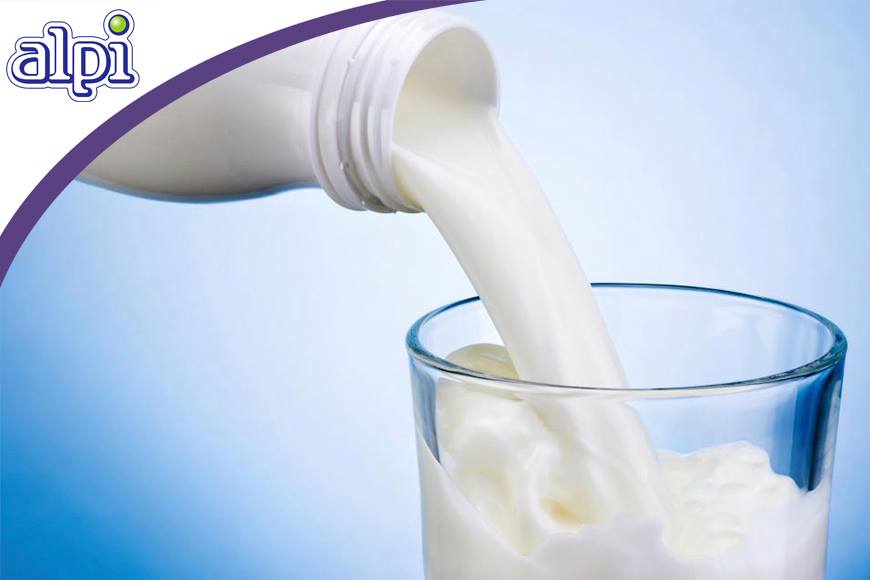 Undigested lactose also increases the amount of acid in the stool. Doctors may use this test to diagnose lactose intolerance in young children.
Undigested lactose also increases the amount of acid in the stool. Doctors may use this test to diagnose lactose intolerance in young children. Many children allergic to milk also have other allergies. Milk allergy may develop before other allergies.
Many children allergic to milk also have other allergies. Milk allergy may develop before other allergies. Further processing can include heat and filtering. Depending on their level of processing, products are classified as either partially or extensively hydrolyzed. Or they may also be called elemental formulas.
Further processing can include heat and filtering. Depending on their level of processing, products are classified as either partially or extensively hydrolyzed. Or they may also be called elemental formulas.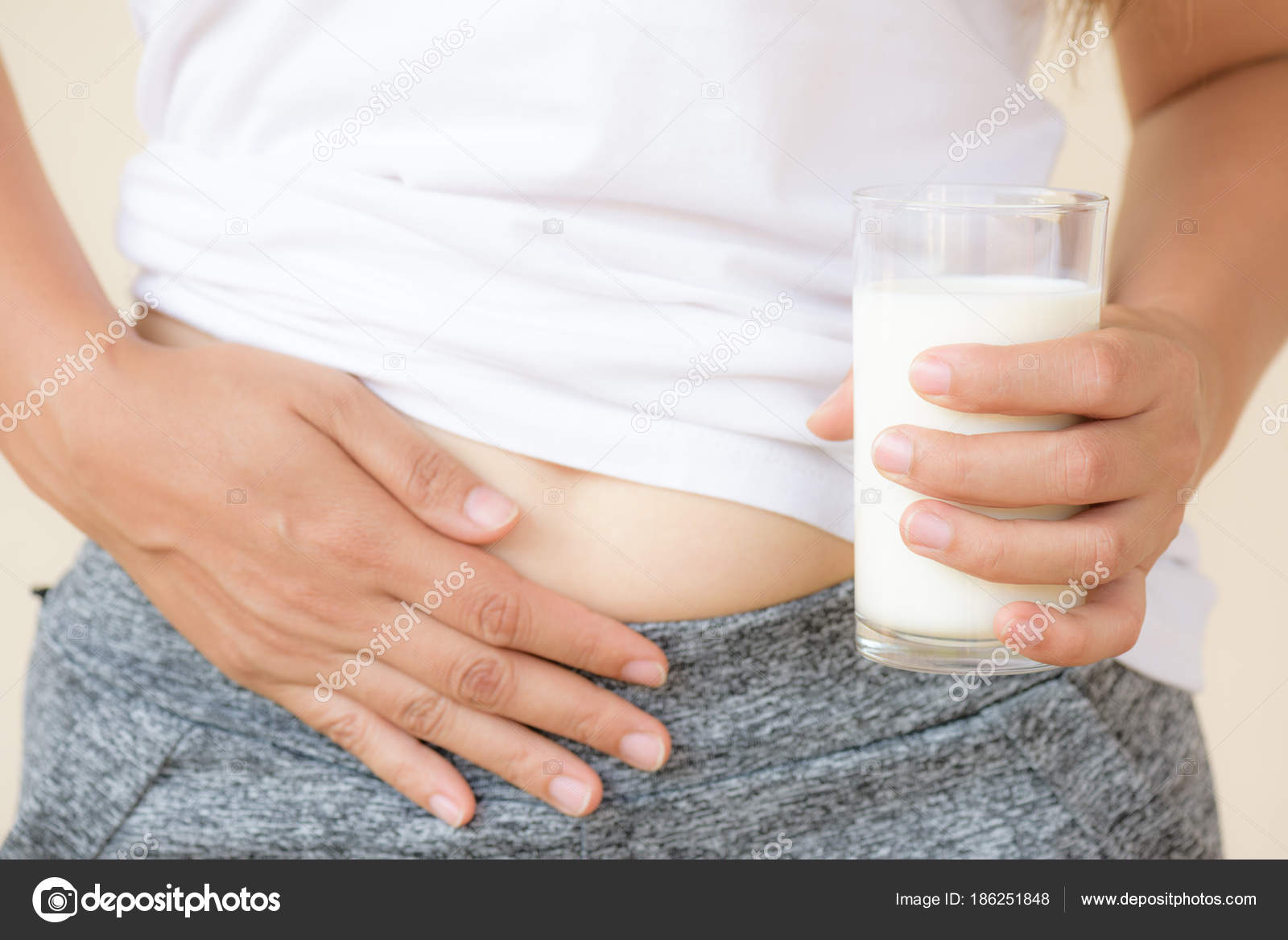 However, people with celiac disease are not at risk of anaphylaxis. This chronic digestive condition is triggered by eating gluten, a protein found in wheat and other grains.
However, people with celiac disease are not at risk of anaphylaxis. This chronic digestive condition is triggered by eating gluten, a protein found in wheat and other grains.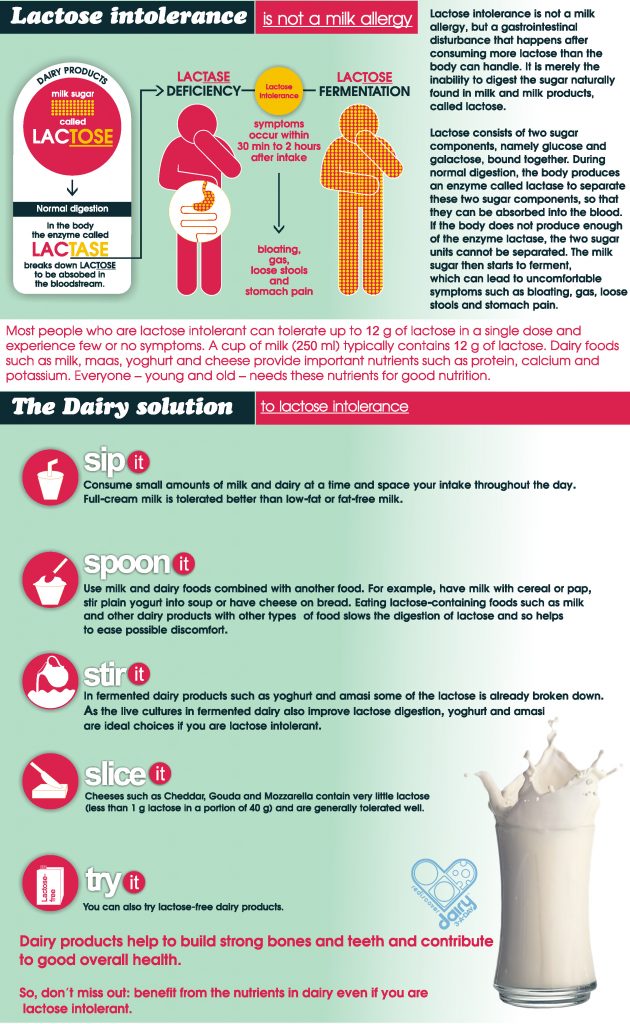 National Institute of Allergy and Infectious Diseases. https://www.niaid.nih.gov/diseases-conditions/food-allergy. Accessed Feb. 18, 2017.
National Institute of Allergy and Infectious Diseases. https://www.niaid.nih.gov/diseases-conditions/food-allergy. Accessed Feb. 18, 2017.